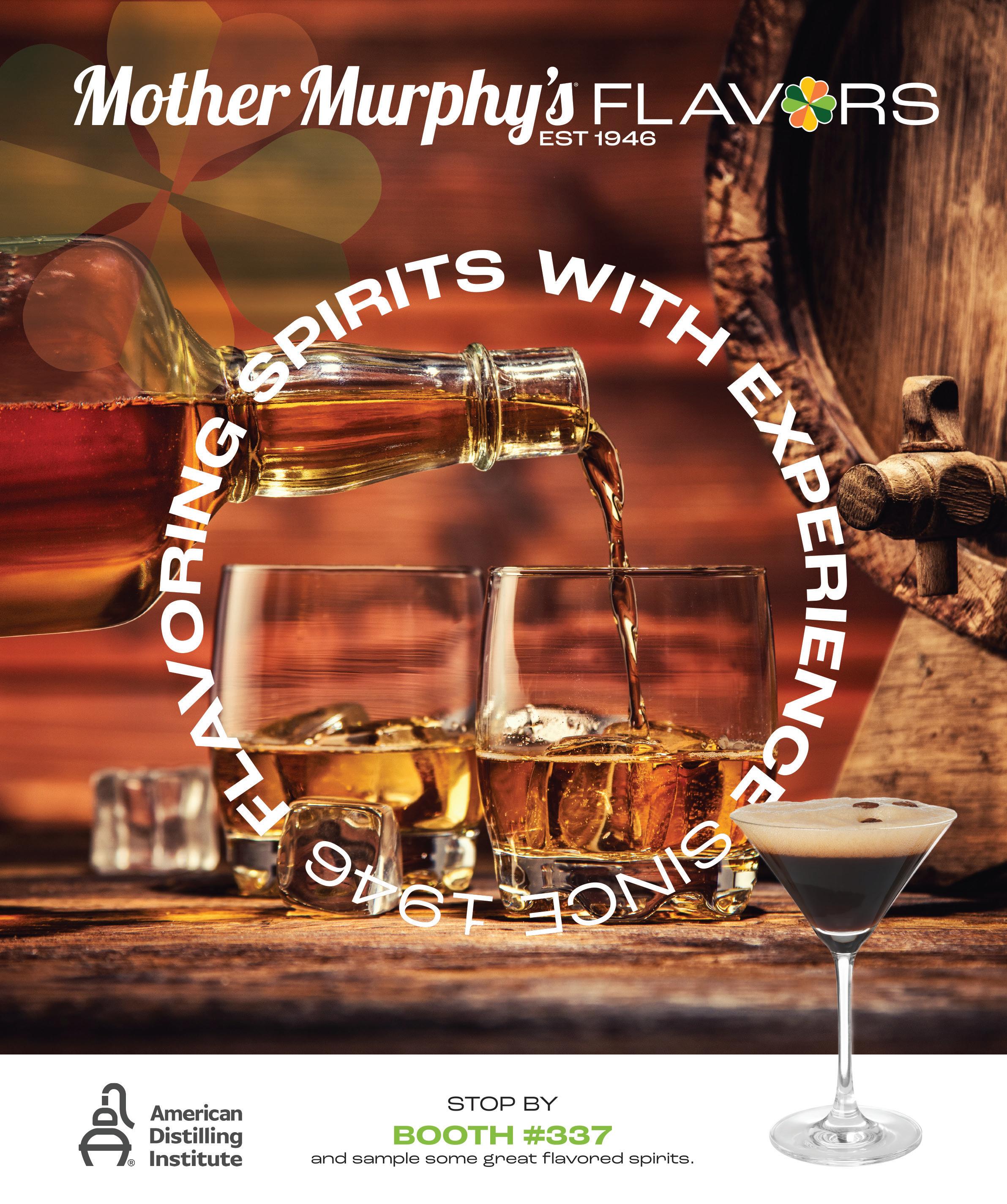
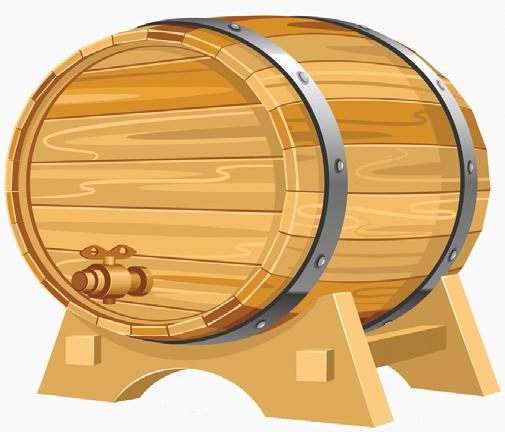



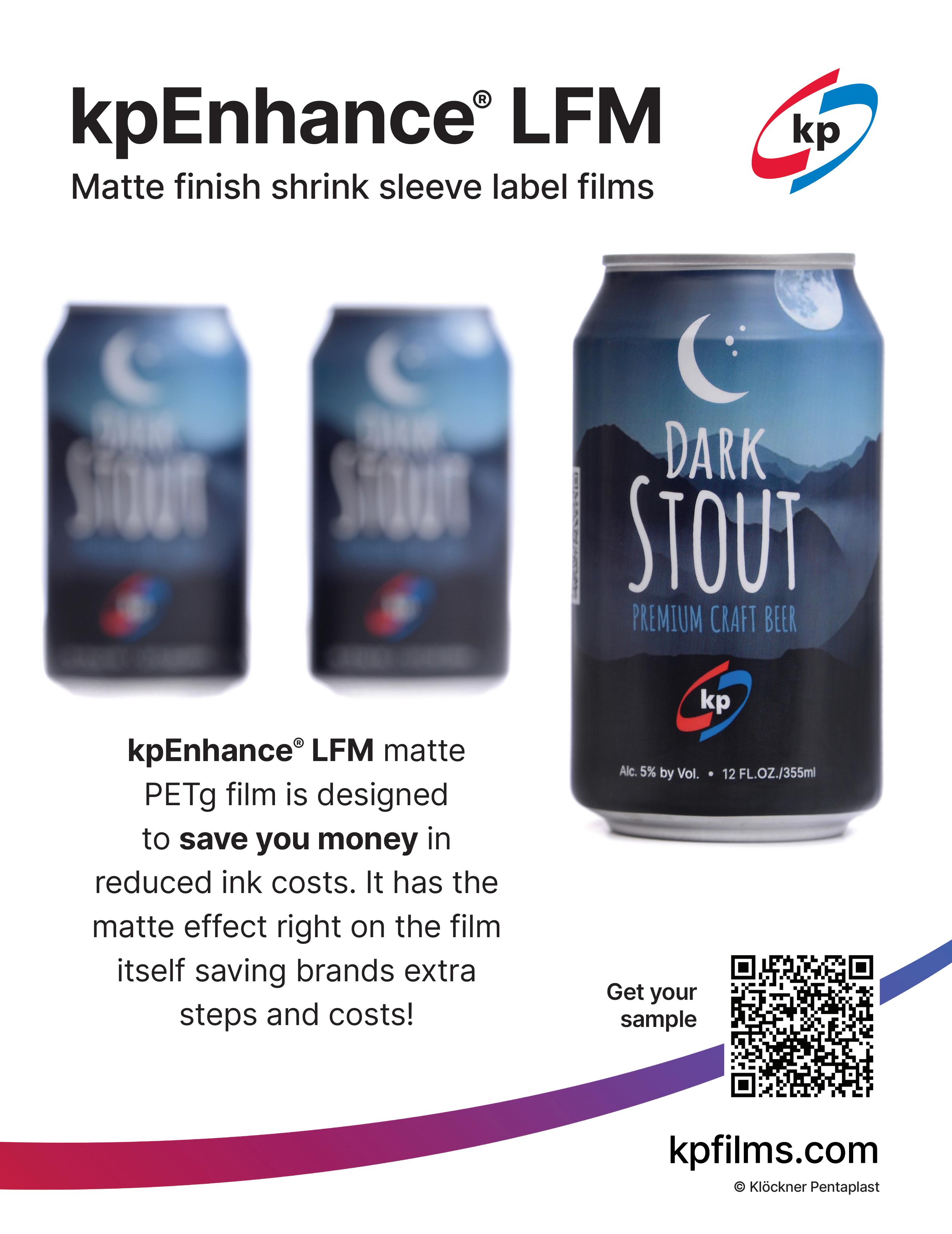
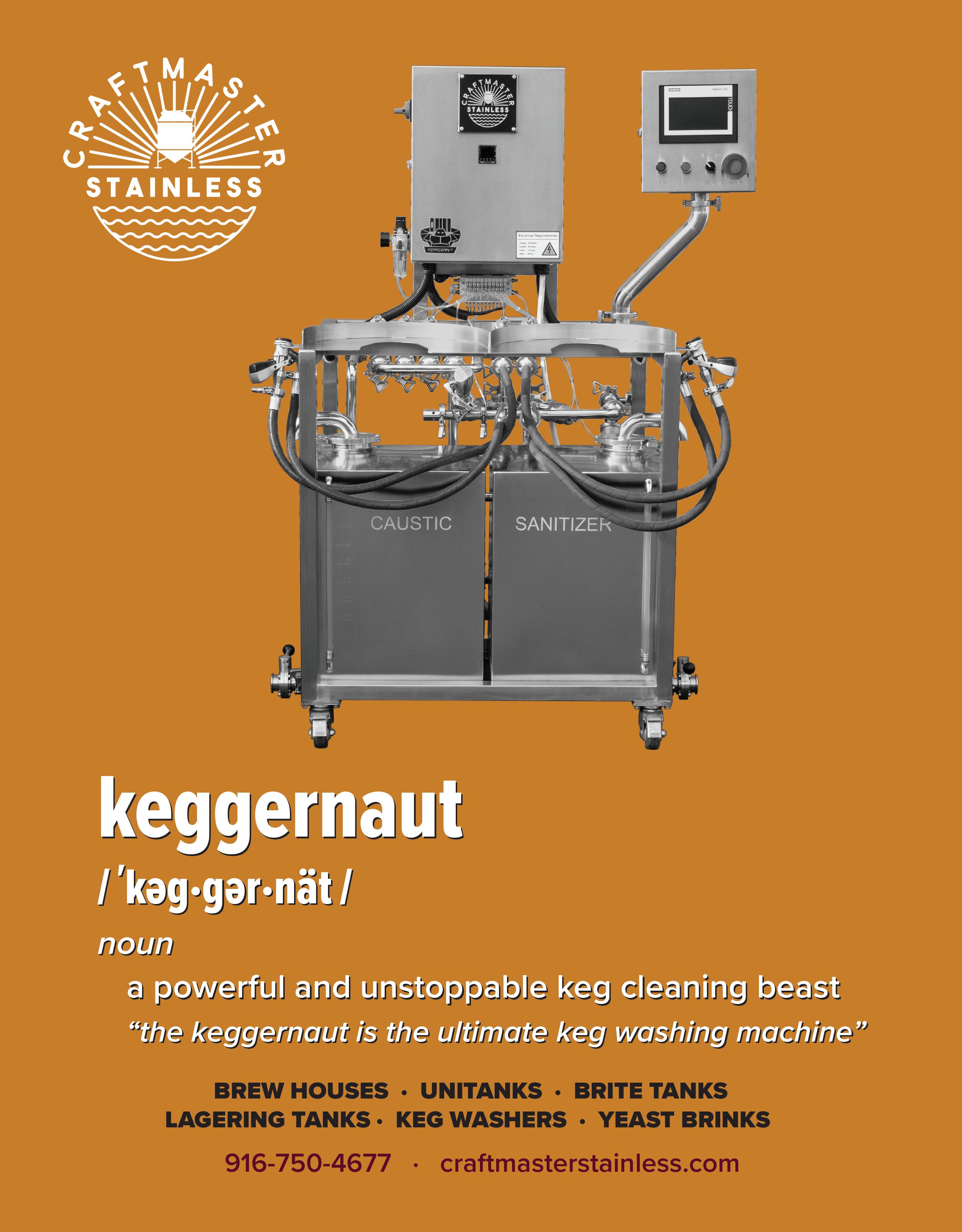


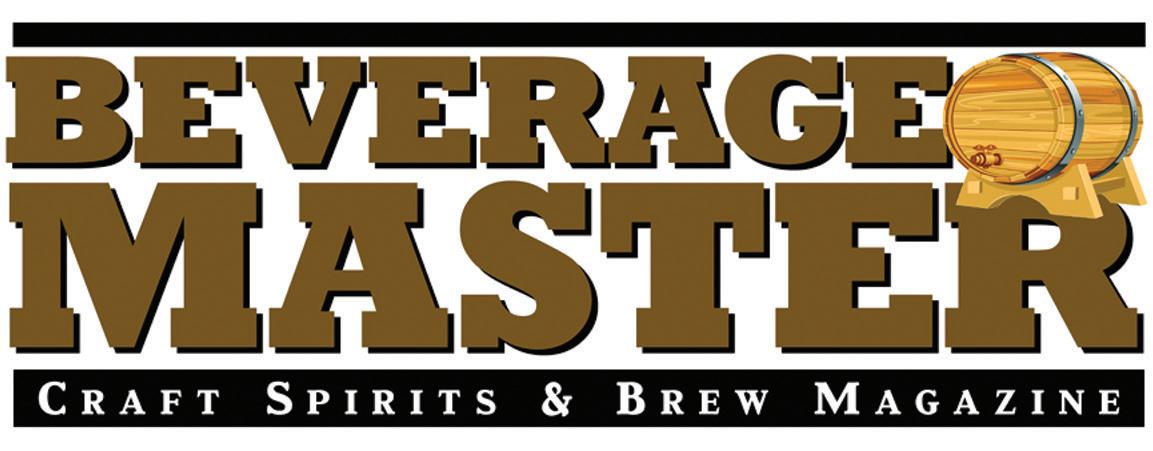
Craft Beverage Practice
Bell Nunnally & Martin LLP BrewOps
Loan Mantra Distillery Now Consulting LLC
Bricker Publishing Division of: Bricker Group, LLC 1409 13th Street North Humboldt, IA 50548
E-mail: editor@BrickerPublishing.com Website: www.BrickerPublishing.com
BEVERAGE MASTER targets the Craft Beverage market and located in Fort Dodge, Iowa. BEVERAGE MASTER is printed bi-monthly and distributed to the most qualified buyers. Opinions expressed in BEVERAGE MASTER are not necessarily those of the publication personnel, but of the writers who contribute stories to BEVERAGE MASTER.
ERROR RESPONSIBILITY: BEVERAGE MASTER is responsible only for the cost of the ad for the first incorrect insertion of the ad. Each insertion of an advertisement is proof of publication and it is the responsibility of the advertiser to check the correctness of each insertion. The publisher shall not be liable for slight aesthetic changes or typographical errors that do not lessen the intent of the ad. No adjustment can be made for advertisements not published. In the event of any error in an ad for which the publisher is liable, the liability is limited to adjusting that portion occupied by the error in relationship to the entire value of the advertisement. No adjustments will be made 30 days after initial insertion date. All contents of BEVERAGE MASTER are Copyright © by Bricker Group, LLC
CHANGE OF ADDRESS: Please send new address and phone number along with “BEVERAGE MASTER” mailing label or email changes to editor@brickerpublishing.com


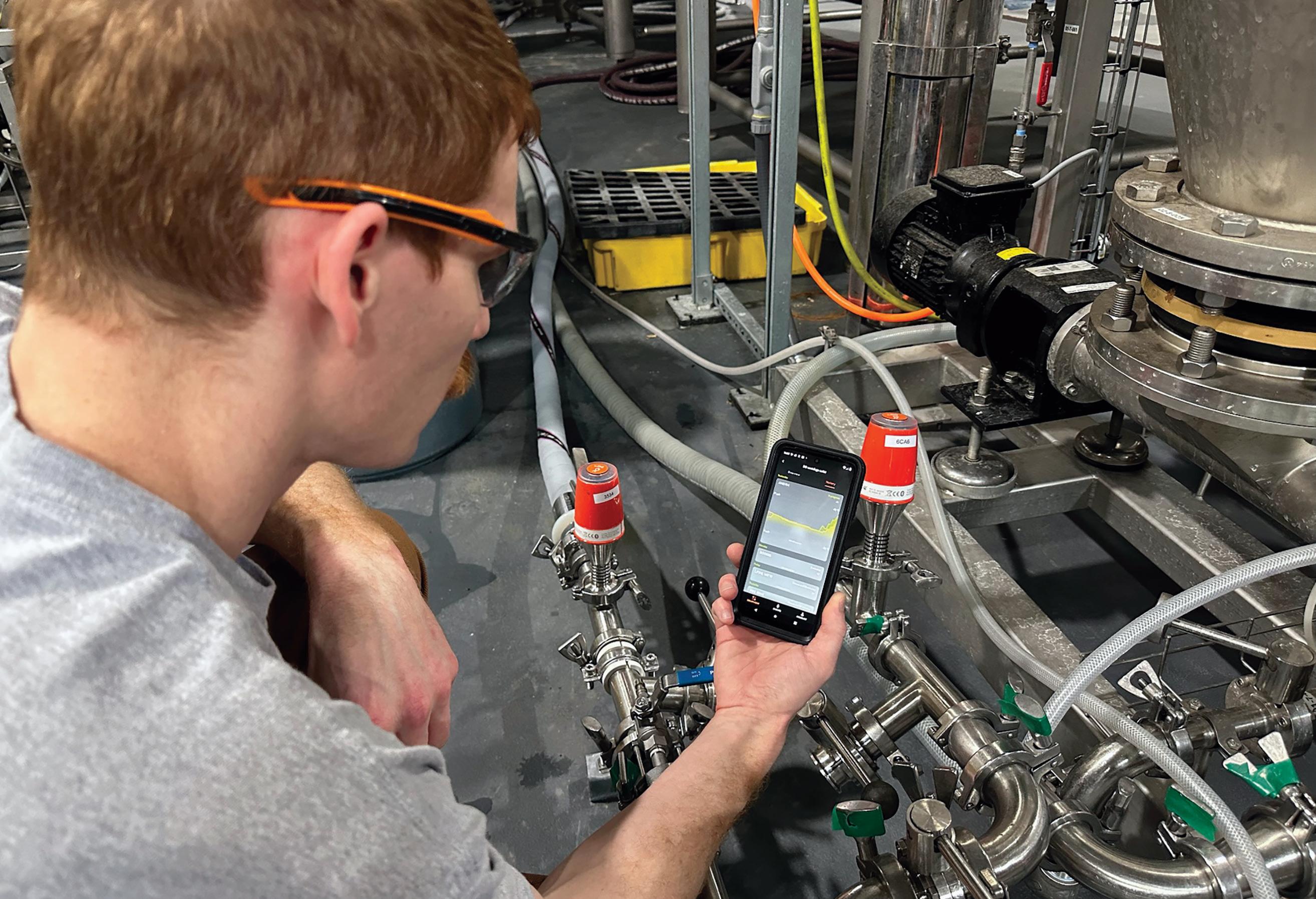
Sensor technology provides a communication methodology that enables long-range and high-speed data transmission from sensors to either a mobile app for local access or to a gateway that relays information to a cloud-hosted solution viewable from anywhere in the world.
By: Aaron Ganick, BrewOps
Brewery equipment is expensive and must be carefully maintained. Downtime is even more expensive. That’s why brewers are searching for ways to streamline operations, compile useful data, and keep eyes on their critical equipment 24/7.
In the recent past, small- to medium-sized craft breweries relied on pen and paper methods for record-keeping and data collection. Only the largest breweries had access to real-time, actionable
sensor-based intelligence. But even then, the automated intelligence was expensive, inflexible, and difficult to modify. The craft brewing industry requires technology that matches its creativity and ingenuity—automation that is intuitive, nimble, easy to install and use, and solves real problems that all brewers face daily.
With a streamlined ecosystem and affordable sensor technology, even the smallest breweries can automate their equipment in a day and imme-
diately receive critical benefits like reducing purge times, increasing operator and product consistency, preventing chiller failure, monitoring glycol temperatures entering and exiting the chiller, preventing product loss, and monitoring dissolved oxygen levels at any part of the brewing process—all while receiving alarms and notifications that save the brewing operators from an unexpected bad Monday morning.
The benefits of implementing automation in a brewery environment are numerous. Here are the top 10 reasons to use sensor technology to enhance various aspects of the brewing process.
1. Ease of Mind: When it comes to monitoring crucial equipment throughout the brew house, sensor technology provides confidence that the utilities are acting the way they should. When anything goes wrong, operators receive instant notifications so they can react as quickly as possible with a minimum amount of downtime or disruption to the product. Automation provides “eyes on the equipment” 24/7 and allows operators to focus on the myriad of other responsibilities throughout the facility.
2. Actionable Data and Insight: Sensor technology provides a communication methodology that enables long-range and high-speed data transmission from sensors to either a mobile app for local access or to a gateway that relays information to a cloud-hosted solution viewable from anywhere in the world. For example, vibration sensors notify operators if a motor is failing and requires service.
Temperature sensors provide alerts when critical processes deviate from set parameters, and pressure sensors arm operators with essential tank level and utilization data. By continuously monitoring and analyzing data on variables such as fermentation gravity and pH, brewers can optimize processes to improve the quality and consistency of future batches. Additionally, monitoring purge gas usage and CIP water waste helps reduce consumption and costs, enhancing both efficiency and sustainability.
3. Ease of Installation: Sensor technology is plugand-play, requiring no IT support or complicated systems integration. Installation takes only a few minutes, and sensors start delivering data immediately once they are digitally activated. Modern sensing technology is extremely rugged, does not
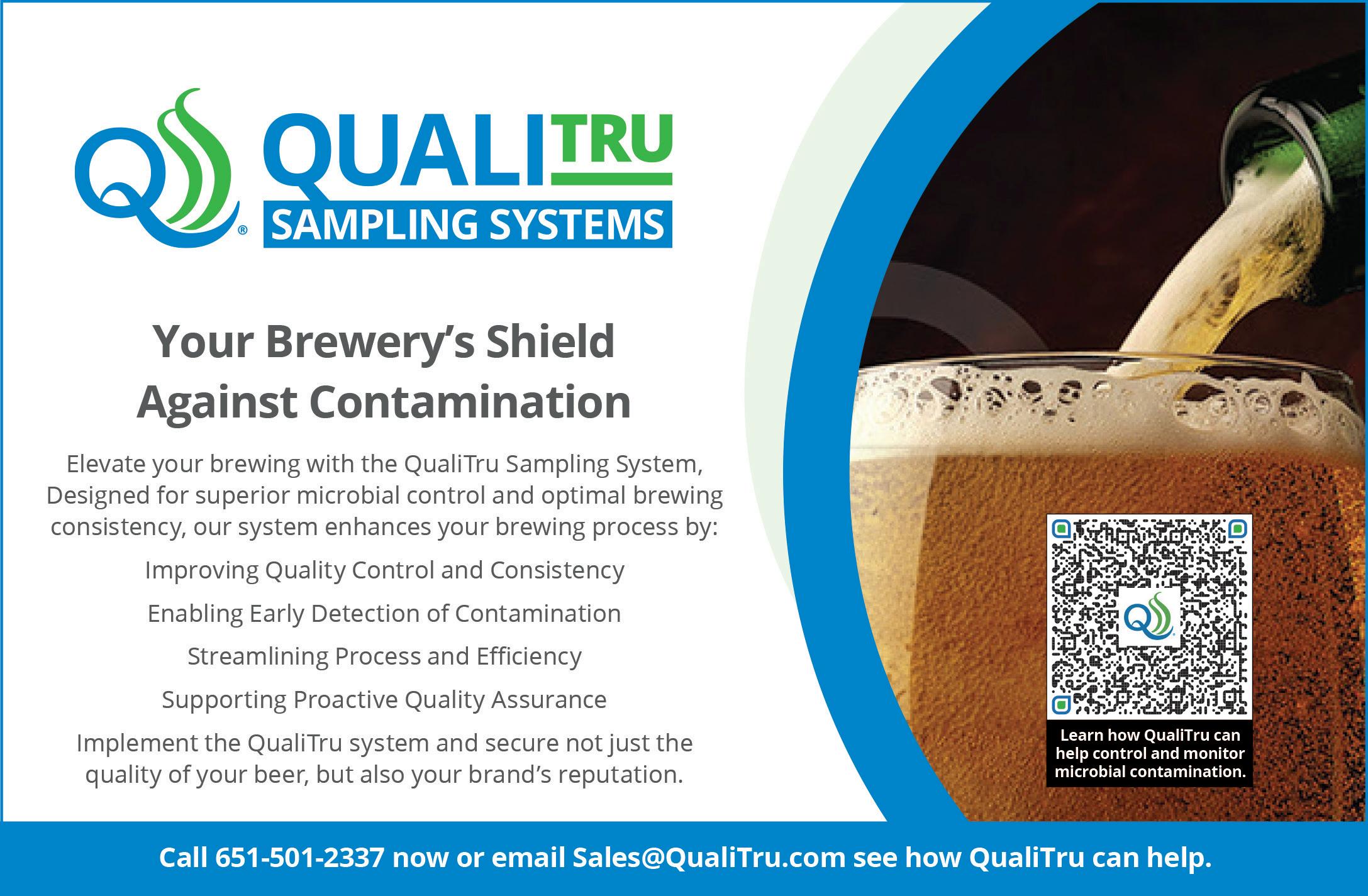
require professional installation, and requires minimal space. Additionally, they are battery-powered with a replaceable, long-lasting industrial power source.
4. Ease of Use: The technology is sophisticated yet simple to use, requiring minimal training. It enables brewery operators to quickly respond to alerts and make necessary adjustments to ensure equipment efficiency and product consistency. The user-friendly interface allows operators at any skill level to monitor and manage processes effortlessly, ensuring smooth operations and high-quality production standards.
5. Time, Money, and Downtime Savings: Brewery equipment is expensive and must be carefully maintained, but downtime can be even more costly. Alerts enable operators to take appropriate actions to keep systems operational. Reduced tank purge time saves money and decreases CO2 consumption.

Automation that features a user-friendly interface allows operators at any skill level to monitor and manage processes effortlessly, ensuring smooth operations and high-quality production standards.
Consistent steam production from the boiler significantly impacts beer quality in the brewhouse. Sensor technology ensures consistent fermentation temperatures, which can be challenging to maintain in the cellar. A failing chiller can cause rising temperatures that lead to off-flavors, off-aromas, and potentially wasted batches of beer that are unable to be sent to packaging. Some brewers report that
an unnoticed chiller failure can result in the loss of a thousand gallons of beer.
Automated systems optimize the use of energy, water, and raw materials, reducing waste and lowering the brewery's environmental footprint.
6. Consistency and Quality Control: When each batch of beer is brewed under consistent conditions, variability is reduced and high-quality standards are maintained. Sensor technology provides granular data that ensures that the quality of the final product is controlled. Automation enhances precision in timings, temperature, and other variable measurements to ensure that ingredients are added at the right moments in the correct quantities—which is crucial for achieving the desired flavors and aromas of craft beer.
7. Efficiency and Productivity: Automated systems streamline the brewing process. This leads to higher production rates, brewery tasks to be completed more efficiently, and the ability to meet growing demand without compromising quality. Significant cost savings with regard to wages and associated expenses can be realized by automating repetitive and labor-intensive manual tasks.
8. Improved Safety and Regulatory Compliance: Automation is crucial to reducing the risk of human error and minimizing exposure to hazardous conditions. For example, the Clean-in-Place process that is used on most brewery equipment can be automated to keep workers less exposed to boiling hot water and harmful chemicals. Sensor technology also helps to ensure that brewery operations comply with industry regulations and standards by maintaining accurate records and consistent practices.
9. Innovation and Adaptability: Automation enhances the creativity and ingenuity that already exists in the brewing industry. Brewers can quickly implement new techniques and recipes with flexible automation that allows them to experiment with different styles and flavors.
10. Scalability: Even the smallest brewers can automate quickly and inexpensively by utilizing sensor technology. One sensor on one piece of equipment can be an immediate game changer. Breweries can scale up as significant savings are realized through more efficient processes and
reduced downtime. Automated systems can be adjusted to handle larger volumes without the need for extensive manual intervention.
Sensor technology does more than just solve problems—it helps to anticipate problems before they occur. It provides flexibility and agility to the brewing process. With automation, breweries can achieve greater efficiency, consistency, and quality while also enhancing safety and sustainability in their operations.
Automation and sensing technology are now accessible to all breweries. Fast and easy-to-install systems can get brewers up and running quickly, even for older infrastructure that was designed with "day one" operation in mind and not the future. All types of brewing equipment can be easily and affordably outfitted with sensor technology.
These sensors can reduce total capital expenditure while also minimizing waste streams. Most importantly, from day one, actionable data provides real results to solve problems, benefiting even the smallest breweries.
Aaron Ganick is a serial technology entrepreneur and the founder and CEO of Preddio Technologies, the parent company of BrewOps. Aaron holds a degree in electrical engineering from Boston University and has authored dozens of granted patents in the fields of optical networking, telecommunications, and automation systems. He can be reached at aaron.ganick@brewops.com. For more information on BrewOps, the fast and easy-to-install brewery automation platform.
For more information please visit www.brewops.com

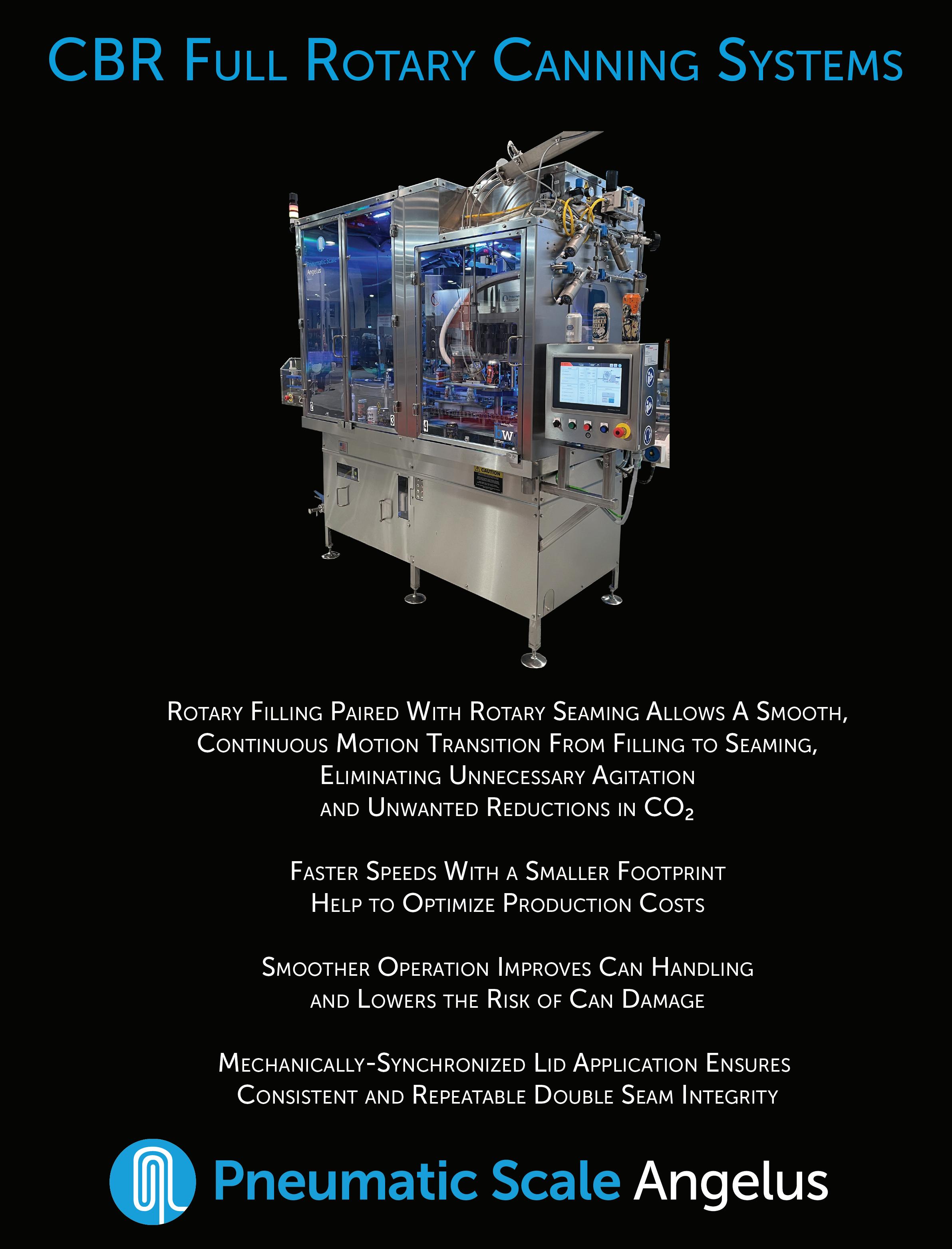

By: Alyssa L. Ochs
Bottling and canning are critical steps in the brewing and distilling processes, yet new ideas and industry trends are now influencing how beverage producers approach their packaging. Bottling still has its place in the craft beverage world for certain products and to adhere to consumer preferences. Yet more producers are turning to canning due to the reduced environmental impact, lower production costs and process efficiency.
Breweries and distilleries benefit from choosing packaging systems that allow quick adaptation and flexibility if their needs or customer demands change. That's one reason manufacturers have cre-
ated machines that can handle both canning and bottling processes with minimal changeover downtime.
Here’s a look at current bottling and canning opportunities and best practices to consider for modern breweries and distilleries.
Craft beverage producers typically get into canning to sell more products because it's convenient and profitable to sell canned beverages to-go behind the taproom bar. Oktober Design, a Grand Rapids, Michigan-based can seamer company, told
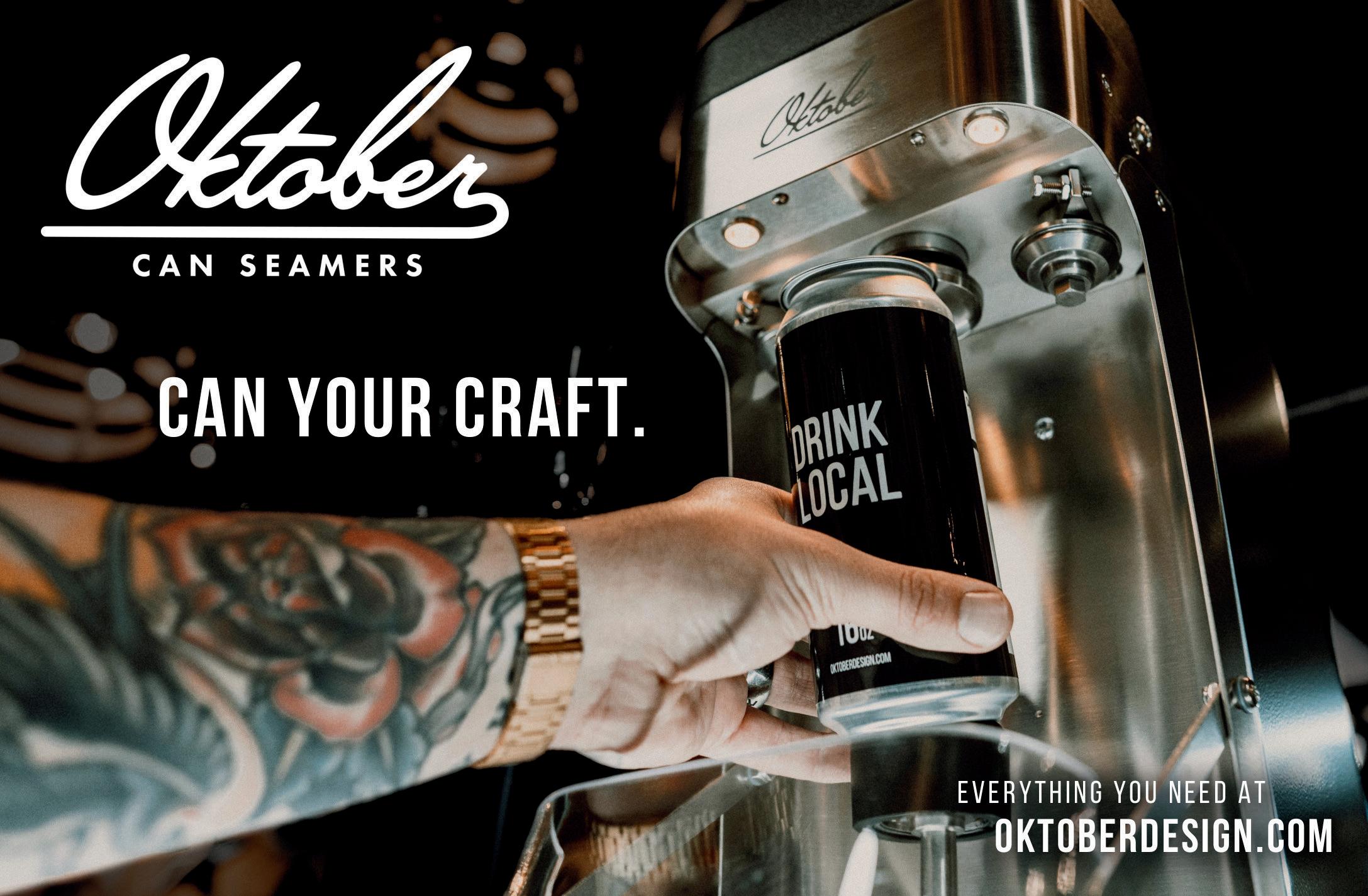
Beverage Master Magazine that a single-head canner offers a low barrier to entry into production canning. Oktober began online sales in 2016 and has a location in Sparks/Reno, Nevada to serve West Coast customers in addition to its vibrant West Michigan shop.
“Even a manually loaded seamer can seal over nine cans per minute, making it quick and easy to offer cans in display coolers, local markets and convenience stores,” said Dennis Grumm, Oktober CEO and engineer. “This lets you test how your products perform in new venues, offer distribution samples and try out different can sizes. It's a tool you'll wonder how you lived without.”
Grumm said that getting started in canning is surprisingly straightforward and that the most challenging decision is often choosing your initial can size. But if you decide to switch sizes later on, it’s easy to swap out the necessary parts to accommodate different cans.
“Ordering a can seaming machine and cans from our website is as simple as click and buy,” said
Grumm. “We've also curated a wealth of how-to videos that cover everything you need to know. And if you have any other questions, we're always just an email or phone call away.”
Brewers and distillers have numerous options when choosing a new canning system. A good canning system will preserve the taste and quality of your products while extending their shelf life and boosting your brand reputation. With an effective canning system, you can customize your production, ensure proper hygiene, achieve consistent fill volumes, maintain consistent carbonation and continually deliver fresh products to your customers.
Pneumatic Scale Angelus, offers open-air CB50F and CB100F systems with magnetic flowmeter technology to fill up to 100 cans per minute. The company's CB50C design utilizes counter-pressure filling technology perfect for ready-to-drink cocktails, hard seltzers and sparkling wines. Pneumatic Scale Angelus also offers a full rotary design with a compact footprint to fill up to 150 cans per minute
in a smooth, continuous motion.
Regardless of your chosen company, there are two main types of canning systems: single-head canning machines and full canning lines. Single-head canning machines are great for smaller breweries because they are affordable and easy to use. While full canning lines are considerably more expensive, they take care of the entire process, from purging to filling and canning.
With an increasing number of beverage companies now canning more than just beer, it's important to consider systems that can accommodate canned cocktails, hard seltzers, kombucha and cold-brew coffee. Look for canning systems that let you package various beverage types and fit into your space. Some canning systems support higher carbonation volumes than others, so assess the filling technology, tubing and flow control dials of the machines you are comparing.
A can seamer is a valuable piece of equipment in the craft beverage industry and might be the key to boosting your to-go sales without breaking your budget.
“Our most popular product across both breweries and distilleries is the Model 8 Automatic Can Seamer,” said Grumm from Oktober. “What varies is typically the can size chosen for different types of beverages. Craft breweries often opt for 16 oz. or the large 32 oz. cans, while premium beverages are often offered in 8 oz. or 12 oz, ‘sleek’ cans. The versatility of the Model 8, which can seal any can size, makes it the favorite in many craft beverage categories.”
Grumm said that many of Oktober’s machines have sealed hundreds of thousands of cans with minimal maintenance.
“A simple wipe-down every day and a dab of grease in a couple of spots periodically is all it takes to keep your seamer running smoothly,” said Grumm. “If anything does go wrong, it's usually a quick adjustment or a small, inexpensive replacement part that we can guide you through replacing with common hand tools. After nearly nine years in the business, we still don't need a dedicated service team, and we plan to keep it that way.”
One reason why breweries and distilleries are switching to cans is for sustainability. However, modern technology is paving the way for sustainable bottling systems that give beverage producers more choices without compromising their values. Innovative companies are experimenting with alcohol bottles made from recycled PET, which are far lighter than glass and BPA-free. The British packaging company Garcon Wines makes these bottles flat so they fit nicely into cartons without extra packaging and in larger quantities on shipping pallets. PET bottles can often be refilled multiple times and recycled, offering shatterproof properties and lighter weight.
Graham Packaging sells recyclable PET cans and bottles for beer, wine and spirits. Its products have a proprietary barrier technology that provides excellent oxygen, carbon dioxide and light protection. Meanwhile, the sustainable bottles are easily accessible with recloseable screw caps and are easy to transport, lightweight, recyclable and shatterproof.
Another company, Frugalpac, makes bottles with 77 percent less plastic than a standard plastic bottle and that is resistant to humidity, spills, premature spoiling and breakage. The Carlsberg Group created a "green fiber bottle" made from paper, and other beverage organizations have been working toward creating totally organic paper bottles. Meanwhile, some craft beverage makers participate in BottleDrop Refillable programs to pursue sustainability goals while controlling supply needs and overcoming potential shortages.
Many breweries and distilleries contract out their canning and bottling to an outside company. These companies often handle the entire packaging process for you and can provide advice about the best bottles and cans for your products.
Outsourcing this work can be beneficial because canning and bottling equipment can be prohibitively expensive and challenging to set up and maintain. Staff members must also be adequately trained to operate it safely and effectively. To choose a contract canner or bottler, determine your budget and assess the menu of various com-
panies' services. If you don't have the time, space or money to control your own packaging process, a contract arrangement may provide new avenues for experimentation and expansion as your business grows.
To-go sales can dramatically improve a business and turn on-site consumers into brand advocates outside the tasting room. To-go purchases are investments in your brand, an opportunity for greater public exposure and ensure a higher likelihood of customer return.
Grumm from Oktober advises producers to use clear, engaging signage to inform customers about their to-go options and prices.
“This simple step can prompt impulse purchases and drive last-minute sales,” he said. “Train your staff to mention to-go options, especially when customers show interest in specific products. Highlighting that they can enjoy their favorite items at home can encourage additional purchases.”

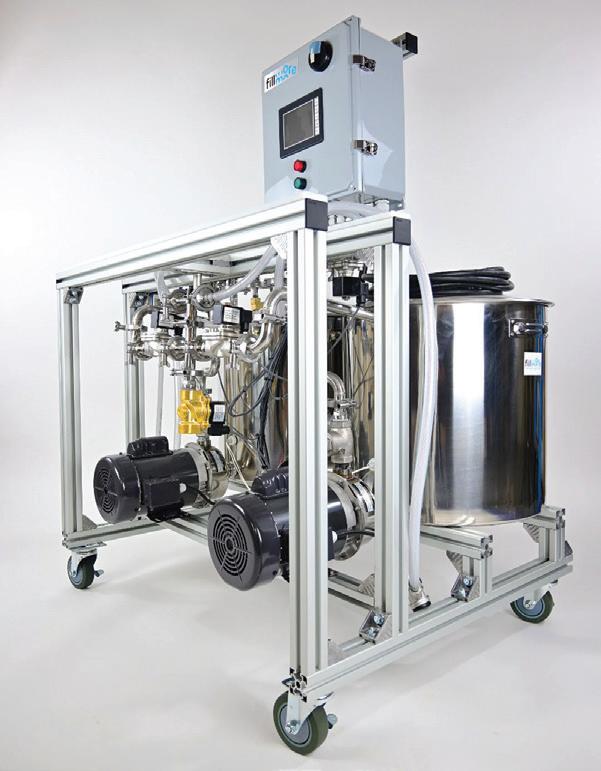
Whether you choose cans, bottles or a combination of the two, it's essential to research and understand what options are available and how they could affect your bottom line. As Grumm mentioned, simply having your staff members ask customers if they want to make a to-go purchase can create a huge jump in sales, thereby justifying a new canning or bottling investment in the long run. Research shows that customers who make to-go purchases are also more likely to return to your business, which is a great way to expand brand awareness and help it succeed. You can go one step further with this effort by creating attractive, eye-catching displays for your to-go products near the exit and offering discounts on seasonal products or rewarding loyal customers with special to-go deals.
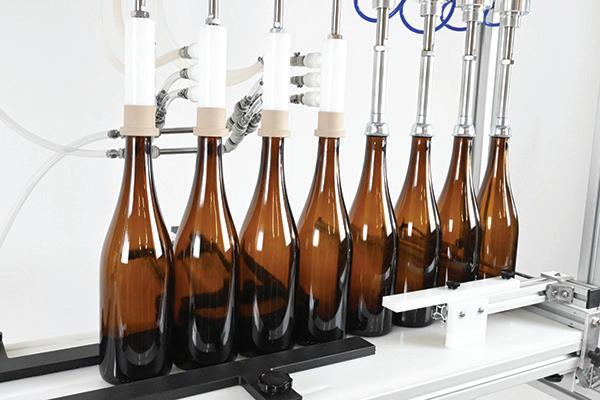
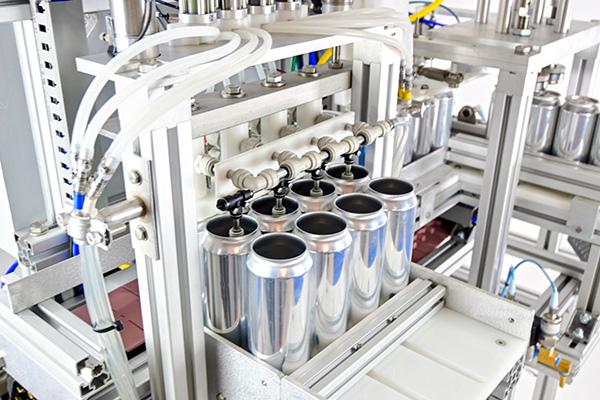
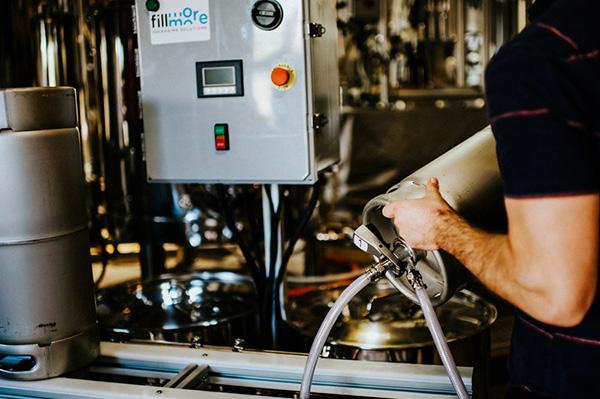

By: Hanifa Sekandi
Trend fatigue is a real thing. Every year, it is something new. When you think your brand has captured the market with savvy marketing strategies, there is another plot twist. Everyone loves a plot twist in a movie, but not when it comes to modern marketing. It truly is a game of chess. There are many wins and many losses. Marketing teams need to have tough skin and a positive mindset. The long game in beverage marketing requires resilience. Also, a loss does not mean that your brand is failing. It means you must focus on marketing strategies that truly resonate with your audience. Every marketing campaign should include previous successful strategies that, time after time, have proven to be fruitful for your brand.
As the CEO of a beverage brand, you need to ask your marketing team why they are not developing unique trends. Marketing campaigns that set in motion viral moments lead to other brands following suit and borrowing elements from your brand. Aside from being touted as the beverage of choice, being an industry gatekeeper elevates you to an elite league. And positions you with not just beverage brands but also other consumer goods brands. It also leads to opportunities for collaboration.
When looking to jump on a trend, gravitate towards timeless ones if your budget is small. Hopping onto a viral trend works if your budget allows room for play, A.K.A. trial and error, rolling the dice. Some brands do not desire to be all things
for everyone. Some brands are happy with their audience and consistent revenue. Many beverage brands in this category avoid trends and do not look for viral moments. For new brands, the pressure to surf the trend wave is overwhelming. Do you have a choice? Can you build your audience organically? If so, how? There are a few cost-effective methods to elevate your brand presence.
Here are two timeless trends:
Does your beverage remind you of extreme sport or a NASCAR race? If your beverage were a clothing brand, who would it be? Imagine your consumer. Where do they shop? What kind of activities do they find enjoyable? Is it fishing? Or golfing? Like beverage brands, consumer goods brands seek ways to reach their audience. An example of a unique brand collaboration was between Fender and Bixton clothing apparel. Fender needed to reach their audience through clothing buying preferences, and Brixton desired to be an apparel brand that musicians gravitate toward.
The Croc and Pop-Tarts collaboration is a fitting example of how to market two brands together. Both brands can reach their audience and attract new consumers from brand collaborations. This was a limited edition launch during the summer. When people purchased a pair of Crocs Classic Clogs, they would receive a box of Pop-Tarts and edible crocodile-shaped Jibbitz candies. This promotion ran for only three days, and a limited amount was available for purchase. Those who wanted to purchase this limited edition had to sign up at a
microsite designed exclusively for this collaboration. Overall, this was a great marketing strategy to improve brand awareness. Having a sign-up form also allowed both brands to gain new subscribers to their newsletters.
Heineken, in 2017, partnered with BAPE clothing. For this collaboration, sweatshirts, backpacks, accessories, jackets and T-shirts were designed to combine BAPE and Heineken branding. These custom-designed items were only available at BAPE stores. The subliminal marketing in this effortless campaign strategy is notable. This is an out-ofhome marketing strategy that illuminates the influence that clothing has on consumer choices and the beverages they purchase. Heineken as a beverage of choice when ordering a beer at the local bar after a visit to a BAPE store is a likely occurrence. Everywhere people go, they are influenced by the advertisements they see. Did you want pizza because you truly desired it, or is it National Pizza Day, and you keep seeing social media posts of the best pizza places?
So how do you get started? How can you dream up a savvy brand collaboration? Research. Spend time understanding the behavior of your desired audience. Look at the brands they lean towards. Find out if the brands you have in mind have done brand collaborations before. Do not approach the marketing director of the brand you have in mind without a plan. You need to pitch ideas and why both brands would benefit from this collaboration. Set the stage for brainstorming ideas and opening the conversation. If you are lucky, they may see this as the perfect pairing. In some cases, you may need to present a marketing plan that allows them
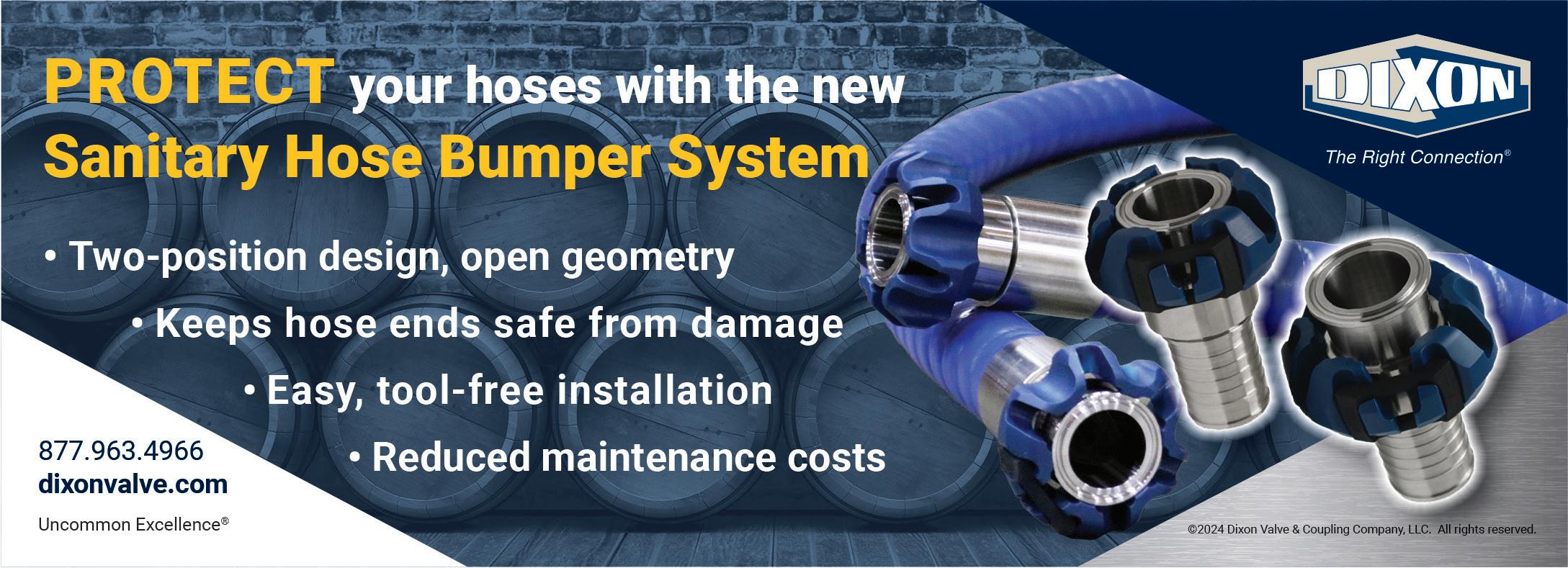
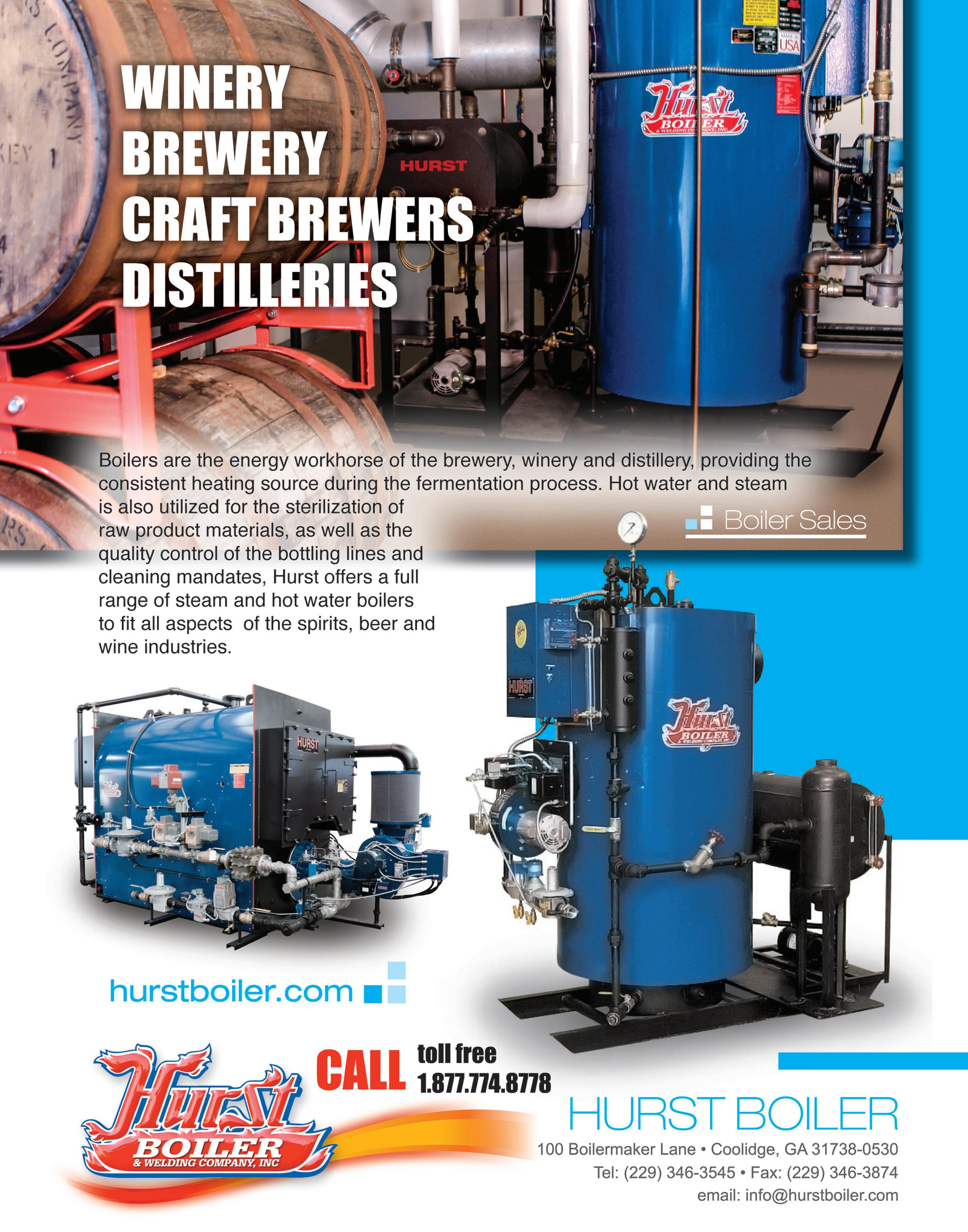
to visualize what this collaboration would look like. In addition, highlight the benefits for both brands if this collaboration occurs.
Should you only approach big, popular brands? No. Both BAPE and Brixton are niche brands. They target a specific consumer base. The sky is the limit with brand collaborations. Crocs also collaborated with KFC. With brand collaborations, you can do several in a year. Supreme clothing and Oreo collaboration is another notable think-outside-the-box marketing strategy. The food your consumer loves in the color of the clothing brand they cannot get enough of. Is your top-shelf tequila or ale the next limited-edition ice cream flavor?
Who doesn’t love a good Caesar salad? When the craving hits, you want to make your own. But you do not want to purchase every ingredient individually. Reaching for the pre-made salad mix is ideal. Consumers like it when brands offer them what they need without the hassle. Take the guesswork out of the process. If you sell cases of your beverage, consider including mixers or other drinks that
pair well with your beverage. Multi-packs are quite popular, but consider making yours functional. Moreover, each beverage pairs well together.
Consider something that has not been done yet, but maybe you will be the first. If your brand offers non-alcoholic beverages, split the pack in half to contain an alcoholic and a non-alcoholic option. Conscious beverage consumption is on the rise. This gives the buyer the option to have one or both. But for those who choose to drink less or attend a gathering with friends and do not drink, this takes the guesswork out for them. It is also very convenient.
A little bit of everything also includes a signature fizzy flavored water that combines clean ingredients. This should be sold along with your beverage. Ensure that all the items are packaged or placed together in-store. Create promotional material that can displayed in-store that highlights your unique offerings. These campaigns can run along with recipes that a master mixologist has crafted for your brand. It also allows you to do a call-to-action where people can show you how they created cocktails from the limited edition offering. Take all
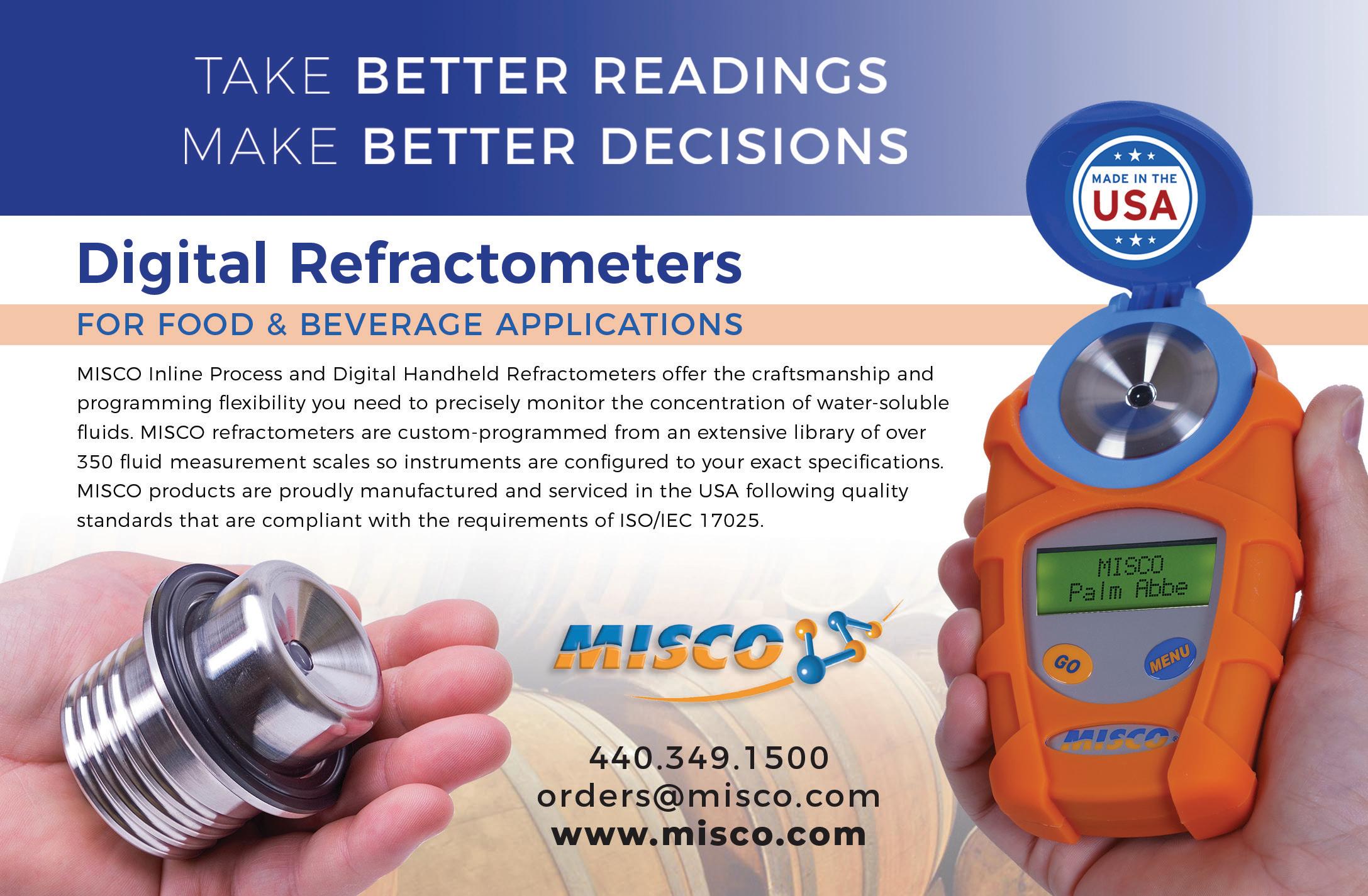
An end cap is quite effective for this strategy. It saves the store trouble and gives you control over how you display this promotion. The beauty of this strategy is that you will introduce your existing consumers to a beverage from your product line that they have never tried.
Each year, pick two timeless trends to implement. If previous trends are still serving you well, continue to utilize them, but be sure to add unique nuances so that they are familiar but different. Both brand collaborations and showcasing several products together are timeless trends that can be used all year. A little bit of everything works well in the summer and during the holiday season. Brand collaborations can occur every few months. Throw your net out wide to see how far you can go with each brand collaboration. Consumer brands are collaborating with famous bakeries. For example, Lakes Brew Co. collaborated with Ginger Bakers to make a Chocolate & Stout Loaf Cake with Lake Brew Co. Breaking Origin Imperial Stout.
Collaborations are not just limited to brands. Influencer and celebrity collaborations with limited-edition products perform quite well. This approach requires due diligence. Remember your brand ethos, what your brand represents and the desired goal. Partnering with a popular chef from a popular show could be fruitful. If you try this form of collaboration, do not assume you must collaborate with a popular influencer or celebrity. Your goal is to target your audience. Niche influencers and celebrities are also a smart choice. It also helps you narrow down your audience. Brand collaborations can have many angles. If you are bold, you can combine both trends: a little bit of everything and a brand collaboration. Both trends give you room to devise a marketing campaign that can help you become a noteworthy beverage brand.
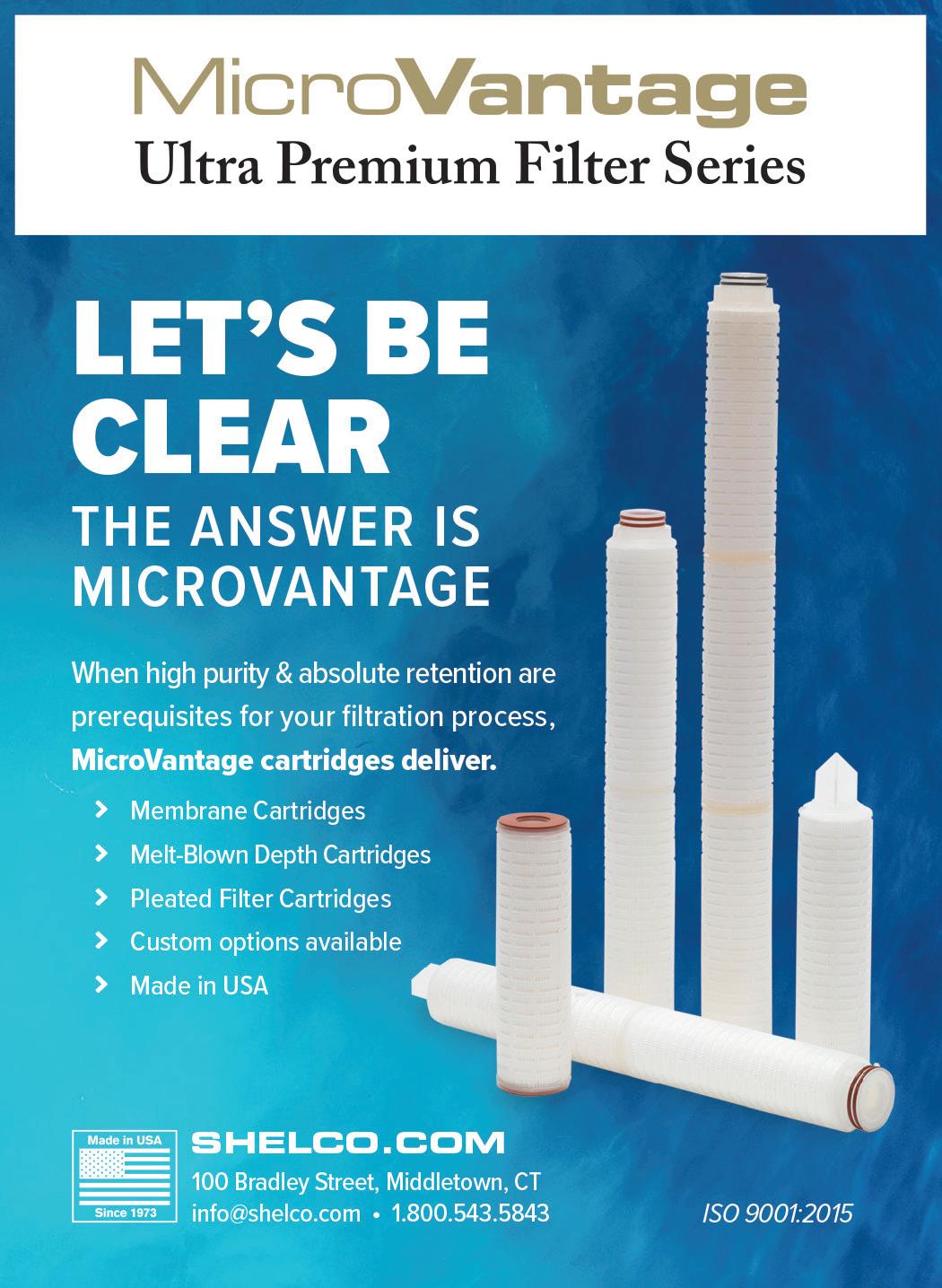

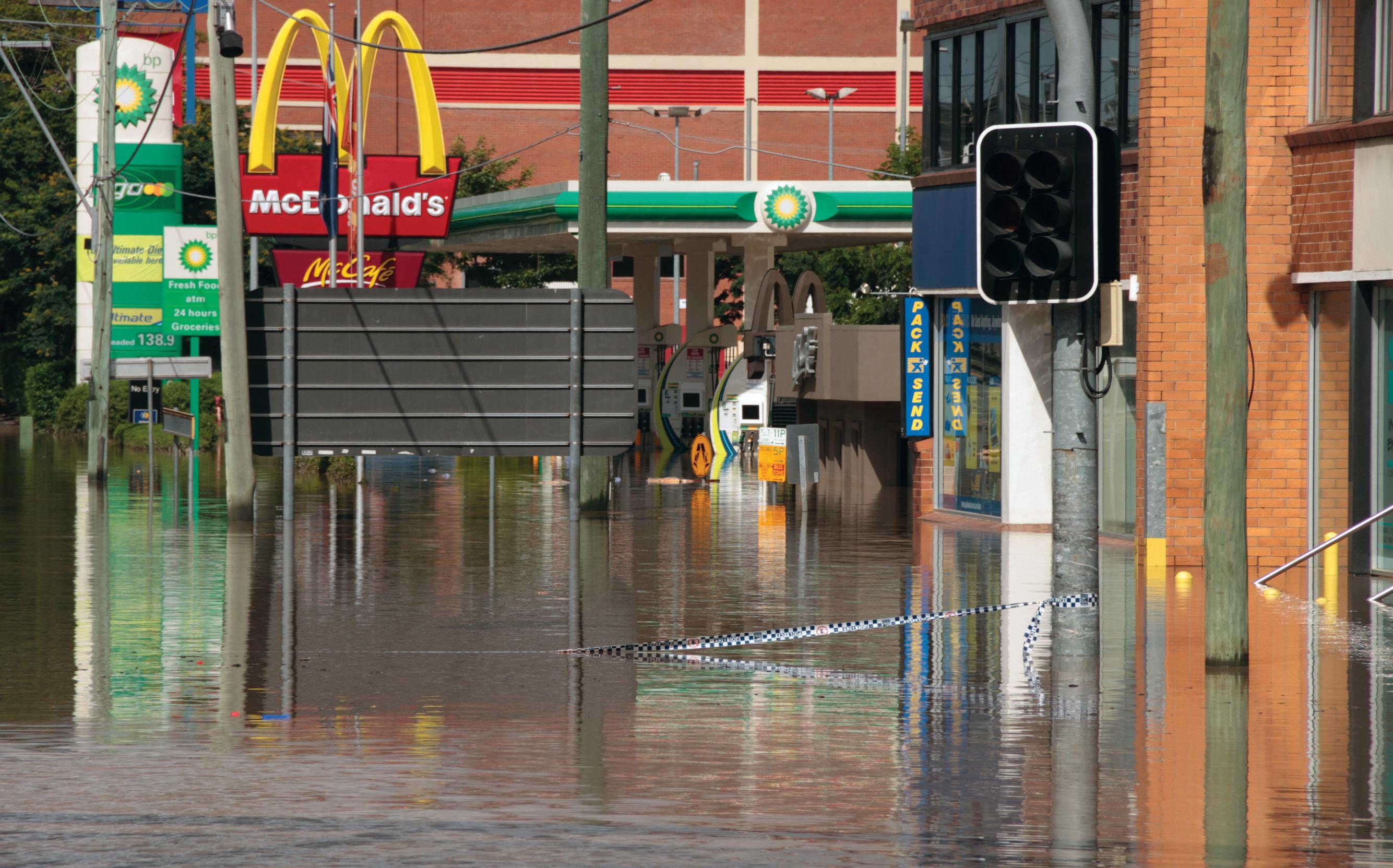
By: Raj Tulshan, founder of Loanmantra.com
une kicked off the official start of hurricane season with the National Oceanic and Atmospheric Administration (NOAA) announcing that the Atlantic region will have an above-normal amount of hurricane activity1. Whether or not your business is in a coastal area, natural disaster can and does, strike anywhere. In recognition of National Preparedness Month in September, we’ll discuss how businesses can become more aware and prepare for natural disasters.
Natural disasters such as hurricanes, wildfires,
floods, earthquakes and tornadoes can have devastating effects on beverage businesses from damaged infrastructure, facilities and inventory to supply chain disruptions, shuttered operations and financial loss. A small business credit survey2 finds that more than 1 in 10 small businesses suffer losses from a natural disaster each year. And for those small businesses that do endure disaster, almost half (43%) never reopen and an additional 29% percent go out of business within 2 years of the disaster3. At the same time, less than half of businesses plan for such events.
That’s why planning for natural disasters is crucial for businesses to minimize costly disruptions and stay in business. A disaster preparedness plan facilitates and organizes employer and worker actions to prepare for emergencies while a business continuity plan determines how the business and its employees will continue operations during a time of disaster.
Assess the Risks: Conduct a thorough risk assessment to identify potential natural disasters based on the geographic location(s) of workplaces, offices, business sites, retail/restaurant/bars, headquarters, distribution, manufacturing plants and even hops fields. The risk assessment will form the basis of a disaster preparedness plan. This plan includes procedures for evacuation, sheltering, communication and recovery steps. Once this step is taken, it is a good idea to review current insurance policies to ensure they include relevant natural disasters and their potential outcomes. Consider additional coverage, if necessary, to protect against specific risks facing the business. Also look at the financial risks including current credit rating and access to loans, capital and financing available today. These financial resources may be needed in the case of business disruption, damages or significant business losses.
Business Continuity Plan (BCP): Create a business continuity plan that outlines how your business will continue to operate during and after a disaster. This includes identifying critical functions, establishing backup systems for data and recovery, alternative power sources (during outages) and ensuring employees know their roles. Ready.gov4 contains comprehensive planning and disaster recovery materials including situation manuals, test exercises, video training, emergency response plans, toolkits and more. Another resource for business continuity planning is a toolkit5 for each type of natural disaster, from the Insurance Institute for Business & Home Safety (IBHS).
Choose Teams: Designate the company stakeholders who should serve as emergency response team leaders and will be responsible for implementing the plan. Team leaders could be based on specific functions, areas of expertise or critical assets. For instance, a team leader could be chosen from job

category like executive leadership, operations, production, safety/quality, IT, sales, marketing, distribution, finance and administration. Make sure that leaders are willing and able to serve in these roles. Next decide the critical hierarchy of functions and where each team leader fits.
Meet with stakeholders to discuss the responsibilities of each role in the recovery process and gain buy-in. Detail specific tasks required to restore business operations in each area. Discuss among group members to decide what each team requires to meet expectations. Identify staff members who will be part of each response team. Go with individuals who have necessary skills, knowledge, and authority to coordinate the staff during a disaster. Remember to assign backup team members to address any absences or overlapping duties. Provide resources and training to team leaders and members to familiarize them with roles, recovery procedures and tools.
Communication is Key: It is important to keep an updated directory list of company and supplier contacts with name and address location information, cellphone numbers, email addresses, home address and alternative contacts. Store the contact database securely and ensure its easily accessible to authorized personnel. Determine ways for employ-
ees to report their status and location in case of emergency.
Establish communication protocols for employees, customers, suppliers and stakeholders before, during and after a disaster. Determine which communication channels will be used during a crisis. For instance: text, phone calls, SMS, e-mail, company-wide platforms, social media platforms and emergency notification systems.
Create communication trees outlining the communication order and assigned leaders for each response team. That way a clear and efficient flow of info during a crisis. Using multiple communication channels helps team reach each other during a crisis. Develop incident-specific protocols that outline how teams share information during a disruption for guidelines on the frequency of updates, the level of reported detail, and the escalation process for urgent matters.
Check Facilities: Ensure your physical facilities are structurally sound and prepared for disasters. This may involve retrofitting buildings, securing equipment, and implementing safety measures. Conduct an audit of any back up energy sources and satellite communications in case of power and phone outages. Also communicate and distribute important safety information ahead of disasters like evacuation routes, fire escapes, location of important equipment controls, the water main valve shut off and the location of energy and gas lines. Conduct regular training sessions and drills so employees know how to respond to emergencies.
Ensure important data is backed up and stored offsite that is needed for operations like transactions, formulations, customer data, transactions, assets, company and employee files, operating systems, applications and software that power business capabilities. If digital systems malfunction, data or information is compromised systems may break down and the ability to conduct business may be lost.
Evaluate the vulnerability of your supply chain and identify workarounds if key vendors are unable to meet commitments during this time. Develop contingency plans with alternative suppliers and logistics solutions to minimize disruption and channel resources accordingly.
Financial Preparedness: Maintain enough financial reserves to cover immediate expenses after a disaster, such as repairs, employee salaries and operational costs during downtime. If this is not possible, assess your access to available credit and capital by talking with a financial professional. Make sure important documents are secure and available. For instance, at Loan Mantra business owners can set up a free account6 and keep copies of financial records in a safe, secure and encrypted environment. The IRS suggests that every plan should include copies of vital business records and financial documents: Bank statements, tax returns and insurance policies. They also suggest documentation of valuables through photos or videos that are stored in a safe location. Information on disaster assistance and emergency relief for individuals and businesses is available at IRS.gov7.
Community for Continuity: Businesses that respond to employee and community needs with expediency can profit during times of disaster and have a greater chance of staying and remaining in business. Harvard Business School Professor, Hirotaka Takeuchi, and 300 of his students spent 9 years studying why Japanese businesses not only survived disasters but thrived versus U.S. companies. As a country, Japan stands out for corporate longevity; 40 percent of companies that have remained in existence more than 300 years are in Japan despite devastating disasters8. These companies consistently focus on serving the common good versus pursuing layoffs and other cost-cutting measures in the face of a crippled economy.
Review and Renew: Natural disaster risks and business operations may change over time. Regularly review and update your preparedness measures accordingly. Using a disaster recovery plan checklist9 can help outline the essential aspects of a disaster plan for testing, training, planning and the recovery process. Once an emergency plan has been prepared, it should be reviewed and updated yearly.
By taking steps to create a disaster preparedness plan to assess risks, plan for business continuity, choose the right team members, establish communication protocols, check and harden facilities, build up financial resources and remember to focus on community, businesses can enhance their resilience to natural disasters and mitigate potential impacts on operations, employees and customers.
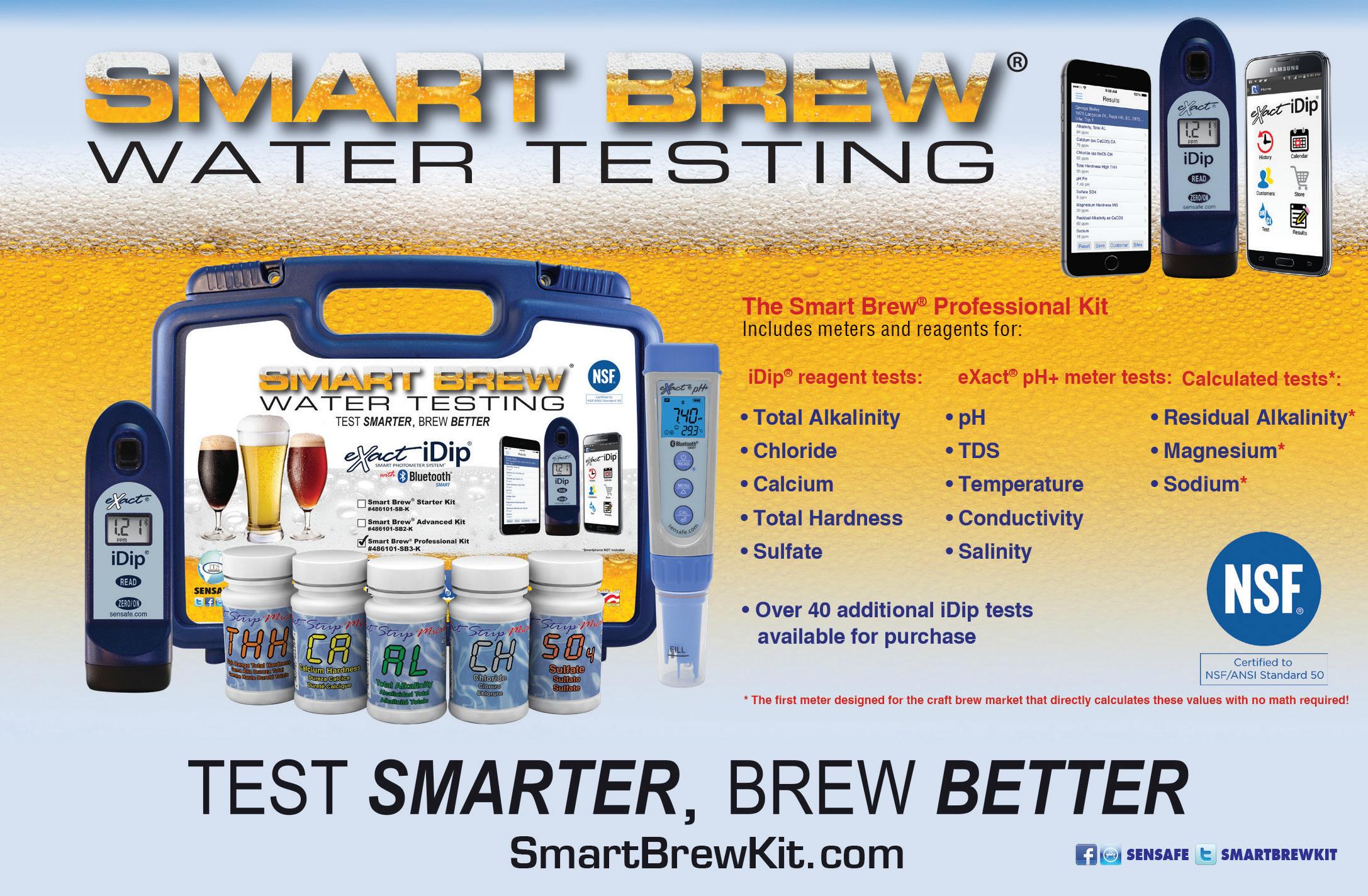
Raj Tulshan is the founder and managing member of Loan Mantra, a one-stop fintech and loan advisory platform that democratizes the loan process by providing corporate sized services and access to entrepreneurs, small and medium sized businesses. Connect with Raj and Team Loan Mantra at 1.855. 700.BLUE (2583) or info@loanmantra.com
1.“NOAA Predicts Above-Normal 2024 Atlantic Hurricane Season.” National Oceanic and Atmospheric Administration U.S. Department of Commerce, 23 May 2024, https://www.noaa.gov/ news-release/noaa-predicts-above-normal-2024-atlantic-hurricane-season.
2. https://www.fedsmallbusiness.org/topics/natural-disasters. Accessed 7 Feb. 2024. 3 https://emilms.fema.gov/is_0111a/groups/23. html. Accessed 7 Feb. 2024.
4. “Business Continuity Planning.” Ready Logo, 21 Dec. 2023, https://www.ready.gov/business/emergency-plans/continuity-planning.
5. “Business Disaster Recovery Plan.” Insurance
Institute for Business & Home Safety, https://ibhs. org/businessdisasterrecovery/. Accessed 7 Feb. 2024.
6. Loan Mantra. https://users.loanmantra.com/ Home/Register. Accessed 7 Feb. 2024.
7. “Disaster Assistance and Emergency Relief for Individuals and Businesses | Internal Revenue Service.” Home, https://www.irs.gov/businesses/small-businesses-self-employed/disaster-assistance-and-emergency-relief-for-individuals-and-businesses. Accessed 7 Feb. 2024.
8. “Why Japanese Businesses Are So Good at Surviving Crises.” HBS Working Knowledge, 26 June 2020, http://hbswk.hbs.edu/item/why-japan-s-businesses-are-so-good-at-surviving-crises.
9 Velimirovic, Andreja. “Disaster Recovery Plan Checklist - 13 Critical Points.” PhoenixNAP Blog, 29 June 2023, https://phoenixnap.com/blog/disaster-recovery-plan-checklist.
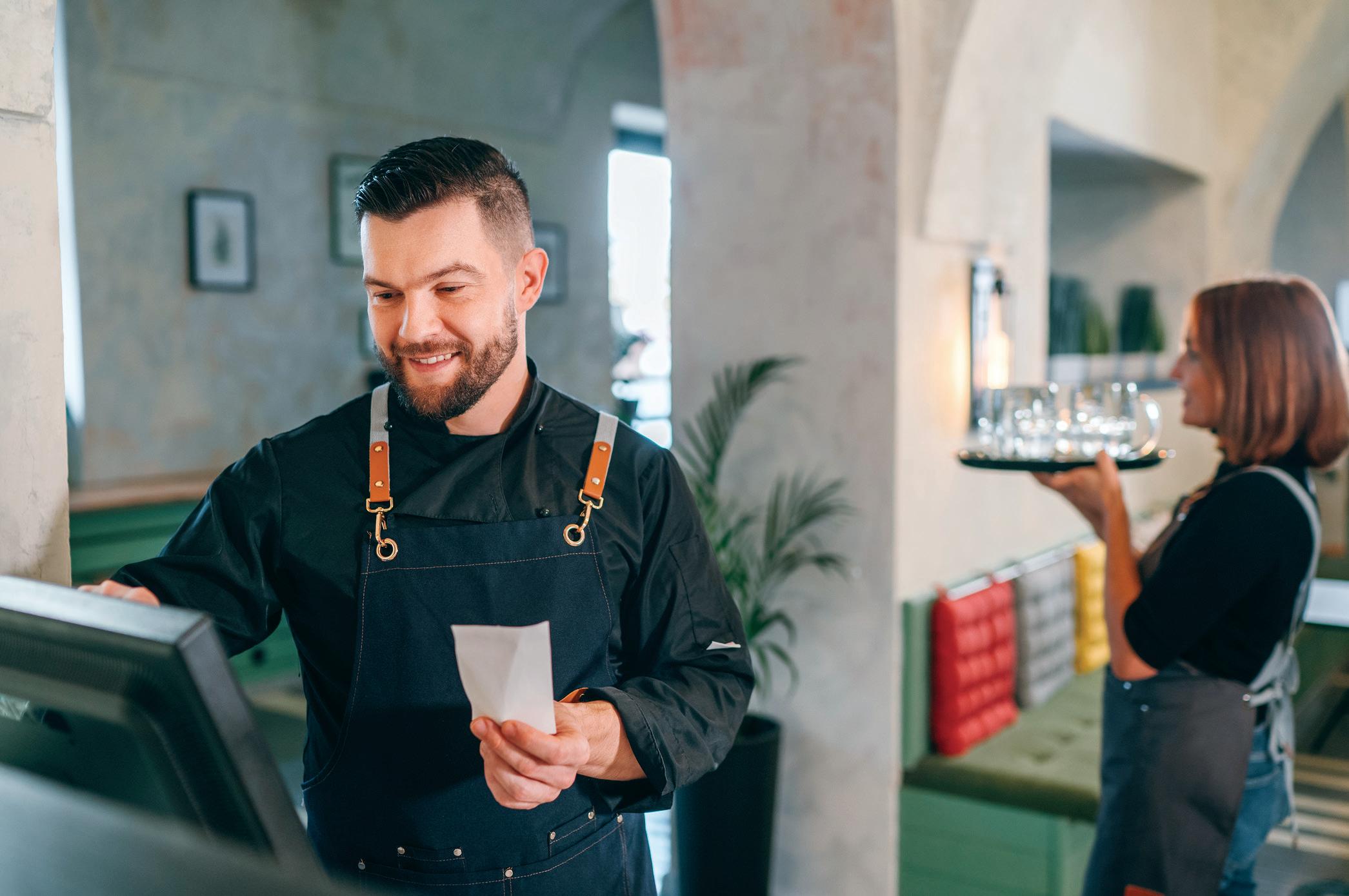
By: Cheryl Gray
The same software and equipment that allows a restaurant or bar customer to pay a bill right at the table is being deployed in breweries and distilleries around the globe.
Software and equipment that handles everything from point of sale to inventory is making the job of containing costs and increasing productivity easier for brewers and distillers using this technology.
The payoff is realized through a bottom line that can show a respectable boost in productivity by freeing employees from excessive paperwork. That means more time is spent on making and selling
products, not on the tedium of tasks that can rob any operation, large or small, of time and, ultimately, money.
Some POS systems and equipment on the market not only fulfill the production, inventory and sales needs of breweries and distilleries but also perform some of the same tasks for wineries, taprooms and cideries.
Whether breweries and distilleries are focused on customer retail experience or strictly production aspects, a point-of-sale system provides a way to streamline internal management tasks while, at the
same time, pushing growth through technology. Automation is the operative word.
Equipment, such as touchscreen monitors, allows breweries and distilleries to enter orders. Credit and debit card readers can handle payments with ease. In all cases, these and other kinds of transactions are simultaneously backed up, creating support documentation whenever it is needed. Inventory tracking, employee management, and other tasks formerly done by either hand or outdated software can now be quickly and accurately accomplished.
Some POS software options now on the market work seamlessly with multiple devices, including tablets, desktops, laptops and industrial machinery. Some can be synchronized with barcode scanners and scales. Breweries and distilleries that utilize loyalty programs can use the software to create cross-platform reward programs to keep customers coming back for repeat business. Another use is printing invoices instantly and then sending those invoices by either email or a QR code. For customer retail-focused breweries and distilleries, handling different methods of payments, splitting checks and even managing tips can be accomplished by using a POS system. With some of the available POS systems, offline payments are automatically synchronized whenever the POS is reconnected.
Spot-on bookkeeping is a necessary part of any brewery or distillery. A POS system can ease the job with timely and accurate reports. Some systems provide intuitive data with charts and graphs mapping out current and projected sales. POS software and equipment present many options as a management tool. Breweries and distilleries can assign each employee specific access by creating unique staff login credentials using, for example, PIN codes or badges. POS systems can also generate sales reports and assist with time clock management.
For inventory, POS systems offer analytics and visual data in real time. Breweries and distilleries can track in minutes how individual items are selling or how specific categories of items are faring. Advanced features, such as tag and comp tracking, are available.
POS systems more focused on production offer a different set of features than those that are cus-
tomer retail-focused. Among the core features of these types of POS systems is software to manage brewhouses and cellars.
These systems provide log management options for brewhouses and distilleries. Managing daily tank checks and contract brewing are also features. These systems can also monitor yeast management and calculate material use in real time.
For breweries, streamlining beer production through a POS system allows for beer production scheduling using a tank scheduling feature, material requirements planning, visual data such as calendars, production setup specific to each brewer and forecasting.
Another feature is managing beer formulas, designed to replace spreadsheets and instead use software for recipe management and monitoring costs for materials and inventory in real time. Streamlining regulatory compliance reporting is another important feature. This includes timely reports of excise taxes, international reporting and documentation as required for the TTB Brewers Report of Operations.
Quality control options feature integrated quality control testing that includes evaluating formulas and analyzing recipes by test results based on in-bound raw materials tests and in-process quality control tests. Accounting features allow for a quick analysis of a brewery's current production cost, projected future costs, and any calculations needed to assess the costs of developing new products.
An analytics feature for both breweries and distilleries allows for smooth interfacing of POS software with programs that include Microsoft SSRS, Microsoft Crystal, Microsoft Dynamics ERP, Excelbased dashboards or Power BI from Office 365. Other POS systems deploy Apple devices, such as iPads. Another POS system feature is managing supply chains through assessing inventory on hand, sales orders, sales forecasting, keg management and mobile data collection.
One plus to consider is a POS system that is flexible enough to be customized to meet the specific needs of a brewery or distillery, including variations in process, packaging, ingredients and multiple stages of production runs.
On the distillery side of POS systems, tracking inventory, quality control, bookkeeping, managing employees, production and ordering materials are just some of the areas that come to mind when searching for the right system. The system also captures the potential for offline sales.
Distilleries and breweries often participate in offsite events that allow them to introduce products to new customers they may not otherwise reach. Venues, such as local fairs and farmers markets, often occur where internet service is spotty. A POS system that supports offline use permits off-premise sales transactions to be stored when a credit or debit card is swiped. Once the distillery or brewery has that information captured with its POS system, the transactions are processed like any normal transaction after the system reconnects. The reward can result in a new revenue stream. One distillery using a POS system that supports offline sales reported revenue of more than $13,000 from offsite events in one year alone.
Keeping track of inventory is just as important to distilleries as it is to breweries. Just as a POS system can track beer production, it can also keep up with
distillery production, including tracking materials, recipes and employee time. On the retail side, a POS system can track which spirits are running low, versus which are lingering on the shelves. It can also keep track of customer tastes and tabs.
Costs for a POS system and accompanying equipment can vary. Experts advise that it is best to consult with a company that will factor in the size of a brewery or distillery and how it intends to use the software and equipment. In addition to monthly licensing fees to use the service, there is also the cost of leasing or purchasing equipment. How much equipment will be needed will depend on the size and scope of the brewery or distillery operations. Of course, knowing what post-sale customer service and technical support are provided is another important factor when choosing a POS system and accompanying equipment.
Running a brewery or distillery is no small feat. Making and keeping one profitable begins with putting the right tools in place to ease operations, boost profits and decrease costs. Using a POS system may provide the solution for building and sustaining a successful business brand.
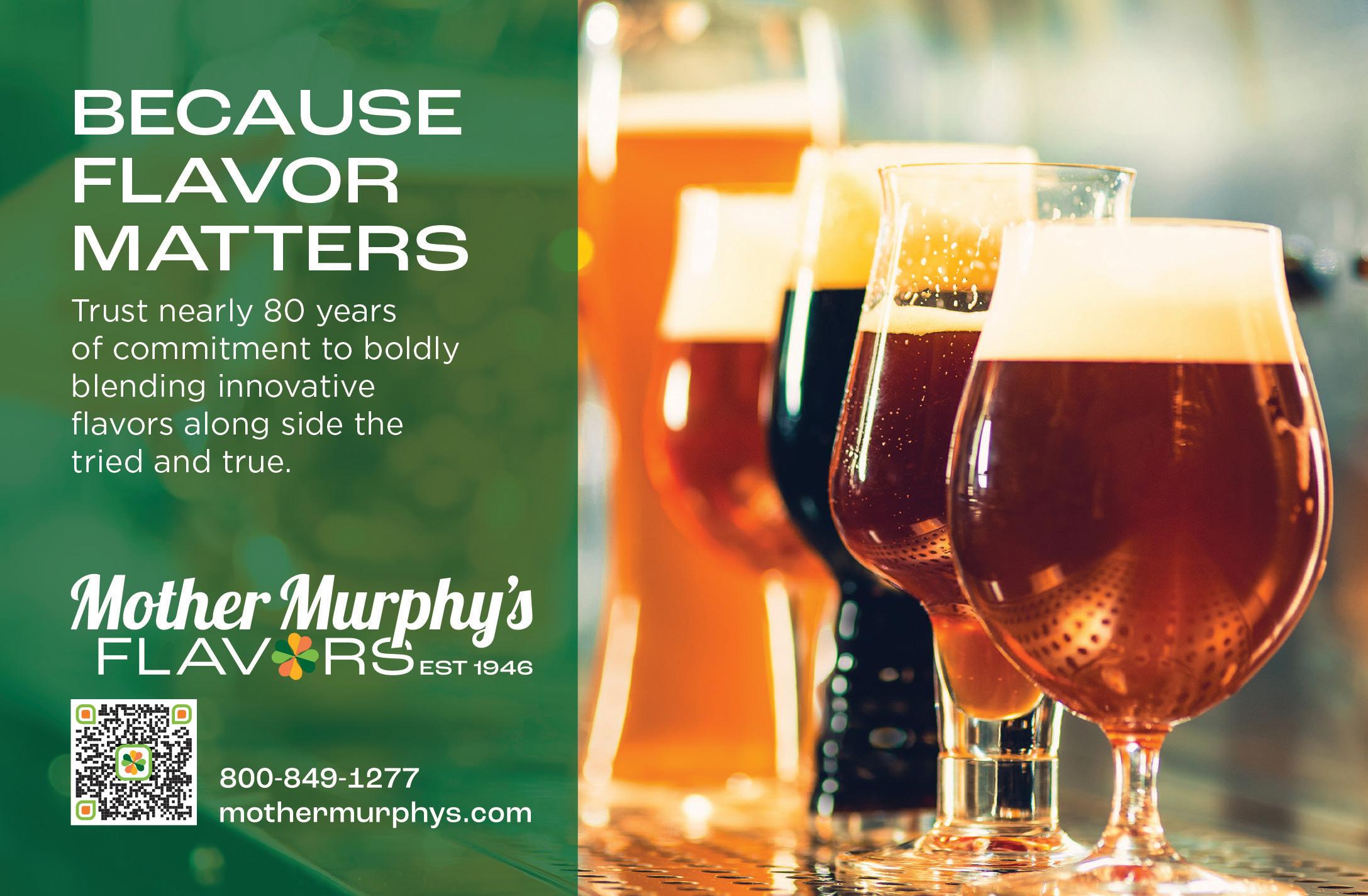
By: Rebecca Marquez, Director of Custom Research at PMMI

After years of soaring sales, craft brewers and distillers are facing forecasts for slower growth. Competition is stiff, margins are under pressure, craft beer sales have stalled, and consumer preferences are shifting toward spirits, hard cider, and non-alcoholic options, according to Craft Beer and Spirits: Success Through Packaging, a white paper and infographic published in February 2024 by PMMI Business Intelligence, a division of PMMI, The Association for Packaging and Processing Technologies. The craft industry also must overcome workforce shortages, address the growth in e-commerce, and meet continuing consumer demand for sustainable products and operations.
To overcome these challenges, craft brewers and distillers are offering a broader array of products, packaging formats, and sizes. Some firms have begun offering copacking services to foster growth.
The best sellers of yesterday do not necessarily stay best sellers. As a result, craft producers must change their product lineup to appeal to today’s consumer and introduce the product, size, and multipack options they want. Innovative products and seasonal and special releases also help spark consumer interest and build brand identity. As consumer tastes have changed, some firms have

turned to copacking to absorb excess capacity and boost revenue.
This level of product variety requires adaptable equipment, which minimizes changeover time when switching among a range of packaging sizes and shapes and handling variations in labeling and secondary packaging. Such flexibility maximizes operational efficiency.
Producing a broader array of stock keeping units for in-house or private-label brands requires flexible processing and packaging lines. Increasingly, the flexibility needed to efficiently switch among a growing range of packaging sizes and formats is provided by automation, which also can enhance the working environment and help offset worker shortages and difficulties with recruiting and retention.
Automation also can boost efficiency, quality, and productivity, according to The Future of Automation in Packaging and Processing report from PMMI, The Association for Packaging and Processing Technologies. As a result, more craft brewers and distillers are considering automating manual processes, especially depalletizing, case packing, and palletizing, and studying how their operation could benefit from the installation of automated guided vehicles, industrial robots, collaborative robots, and mobile robots, now increasingly supported by artificial intelligence and advanced vision capabilities.
Sustainability remains a major focus for consumers and regulatory agencies with the goal of reducing landfilled waste, minimizing plastic usage, particularly in single-use applications, and establishing a circular economy. As a result, renewable materials like paper are receiving considerable attention.
Once unheard of, paper bottles are making their way into the marketplace. Distillery 98 of Santa Rosa Beach, Fla., has adopted a modernized bag-inbox concept for its Half Shell Vodka. The package features a metallized polyethylene terephthalate pouch inserted in a creased paperboard blank, which has been molded into a bottle shape. The recyclable package supports circularity as it con-
tains 94% recycled paperboard and cuts carbon emissions by a factor of six versus a traditional glass bottle. Preprinting the blank eliminates the need for a separate label. “We hope that our commitment to Half Shell’s transformative bottle persuades more companies to embrace environmentally friendly packaging,” says Distillery 98 co-owner Harrison Holditch. (1)
A streamlined recycling process is the goal behind installation of a drainage press at Saint Arnold Brewing, the first craft brewer in Houston, Texas. The machine makes it possible to quickly prepare filled reject cans for recycling, reduces the number of cans awaiting recycling, eliminates the need to pay another company to prepare the reject cans for recycling, generates income, and is expected to have a quick return on investment. The craft brewer also reuses its printed paperboard six-pack carriers. A Recycle Rewards program gives consumers incentives to return the carriers. Reuse reduces waste as well as packaging costs. (2)
Taking a different approach to multipack unitizing, Flying Tiger Brewery in Monroe, Louisiana, has adopted compostable four-pack rings for its Doux Drop wheat ale. Made from wheat and barley, the biodegradable rings can be eaten by wildlife, according to nola.com. The transition coincides with the company’s pledge to donate 5% of Doux Drop ale sales to the Louisiana Wildlife and Fisheries Foundation. (3)
Four Peaks Brewing, an AB InBev craft brewer partner located in Arizona, is one of the first brands to add a recycling QR code across its entire product line. Part of a graphic redesign for the Four Peaks portfolio, the code helps consumers quickly determine where and how to recycle the packaging and is expected to boost recycling rates, divert 3.5 million pounds of material from landfills, and offset more than 5.1 million pounds of carbon dioxide equivalent emissions. (4)
The latest brand-building, automation, and sustainability solutions will be on display at PACK EXPO International (Nov. 3–6, 2024, McCormick Place, Chicago). The new Sustainability Central will serve as an interactive destination with resources to help brands become more sustainable. The PACK EXPO Green program identifies exhibitors that provide technology such as sustainable processes and machines, renewable and biodegradable packaging,
source reduction and lightweighting, recyclable and recycled-content materials, or innovations that reduce carbon footprint. Attendees also can identify resources via the PACK EXPO Sustainability Solutions Finder.
As the world’s most expansive packaging and processing industry event in 2024, PACK EXPO International will feature 2,500 exhibitors offering solutions to many of today’s biggest manufacturing needs from an intersection of industries in 40-plus vertical markets. More than 45,000 attendees from CPG and life sciences companies worldwide will converge, searching for innovation, connection, and insight. For more information and to register, visit packexpointernational.com.
###
1) Distillery 98. Launch of Hyper-Sustainable Half Shell Vodka Bolsters Florida’s Distillery 98 Spirits Portfolio, News Release, Feb. 14, 2023.
2) Hand, Aaron, Texas’s Oldest Craft Brewer Finds New Ways to Manage Aluminum Can Waste, ProFood World, Nov. 17, 2023.
3) Riley, Sean. Edible Beer Packaging from EcoFriendly Beer Ingredients, Packaging World, Oct. 19, 2023.
4) Flanagan, Casey. AB InBev’s Four Peaks Takes the Guesswork Out of Recycling, Packaging World, May 6, 2024.
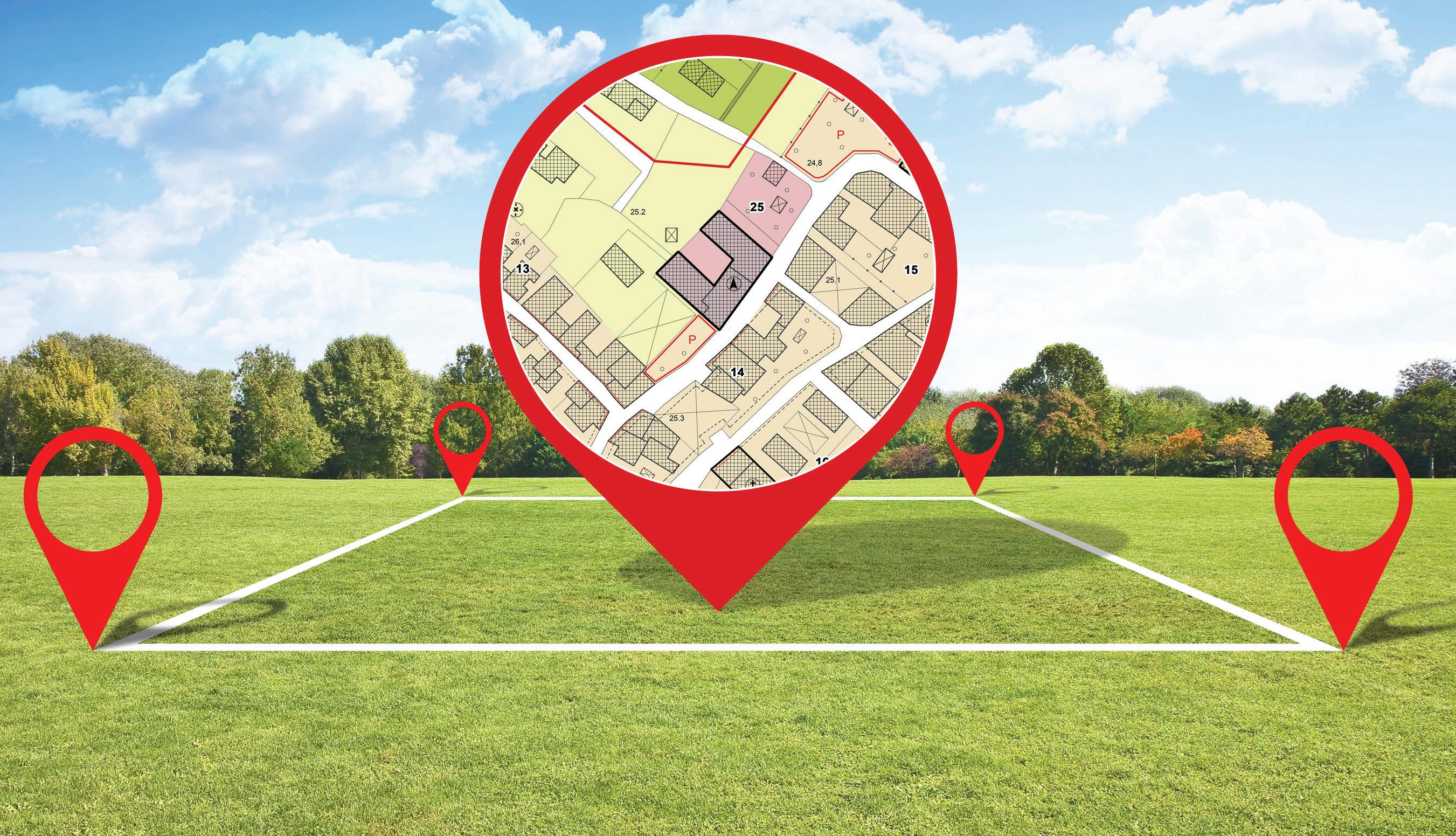
By: Kris Bohm: Owner of Distillery Now Consulting LLC.
hen someone begins the journey of starting their own brand new distillery one of the earliest decisions that must be made is finding the right location where the business will operate. Location scouting can be a tricky process to navigate as there are different options and someone who is new to distilling may not know if a potential location is properly suited for a distillery. Properly vetting a location where a distillery will be built can sometimes be the difference between the business succeeding and failing. In this article I'm going to break down all of the key factors to look at when considering a location. The difference between the right and wrong place can often mean hundreds of thousands of dollars in difference of build-out cost that could be avoided. Let's look at some of the key details to help you find the perfect
location for your distillery. It is important to have an idea about what type of business your distillery will operate. Will it be a more manufacturing focused or tasting room / customer focused business? The answer to this question will play a strong role in selecting a location as we go through things. Lets jump right in to determine if a location is the right place for you.
The first item we look at when vetting a location is zoning. Most distilleries end up being built in areas zoned industrial. If a potential building is zoned light or heavy industrial to allow for manufacturing of distilled spirits it will make the process of permitting for construction and operation far easier than it would be if zoned differently. In many potential locations there are buildings that may seem excel-
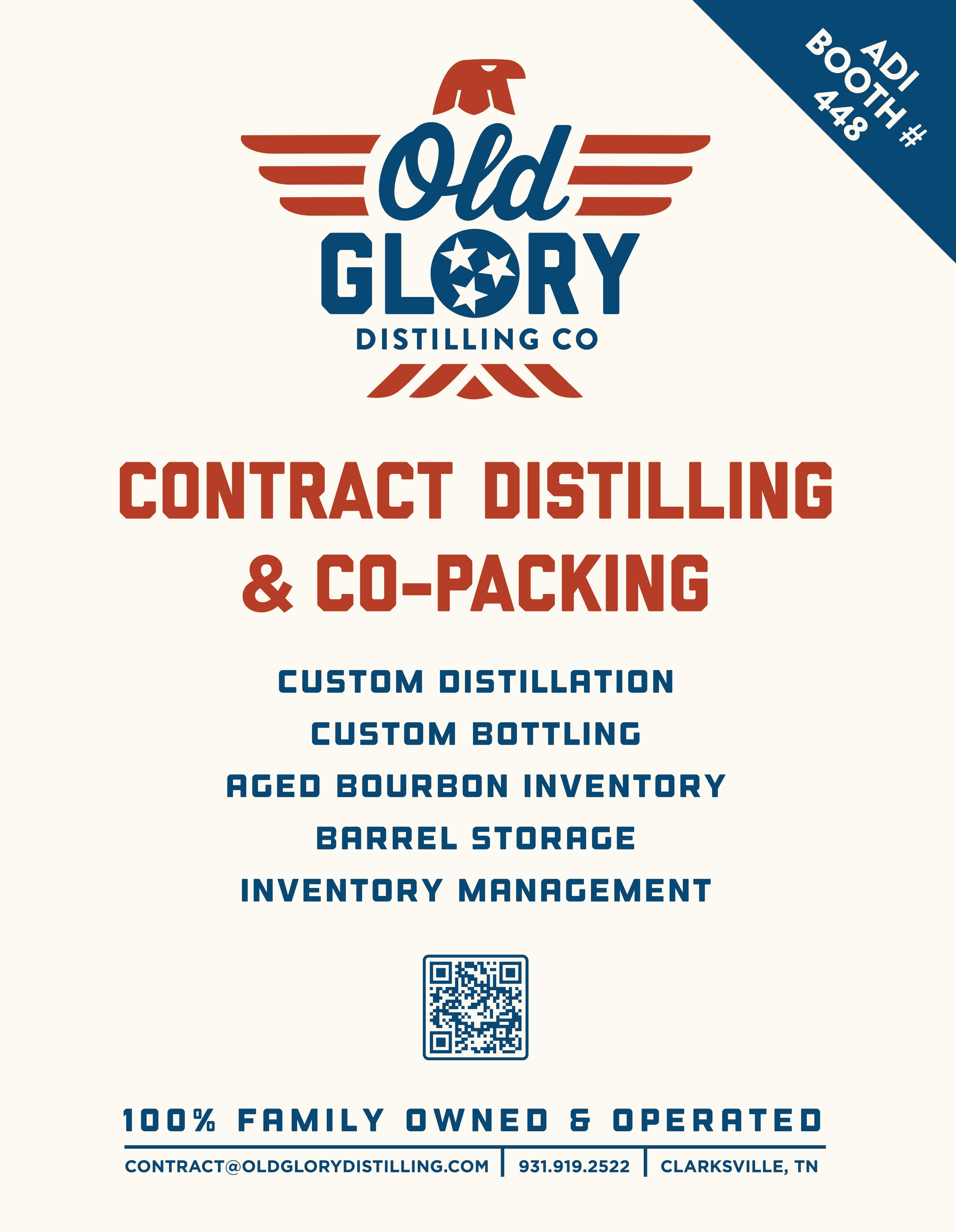
lent fit but the zoning of the building itself may completely prohibit a distillery from operating in that building. Taking the time to contact the local authority who regulates zoning within a given area is the fastest way to determine the viability of a location.
Throughout the world there are many terms that define zoning. One term we often encounter in big cities is that areas are zoned for manufacturing. As you start to look for locations to build a distillery that are zoned industrial you will often find that these locations are less than ideal for drawing visitors. Industrial zoned areas are often far flung from commercial districts and do not draw foot traffic or visitors easily. A location like this can create big challenges for a new startup distillery as attracting visitors to an industrial neighborhood with little or nothing for visitors to do beyond visiting your distillery can create a barrier to a successful tasting room. If you find yourself comparing two different buildings and one location is closer to commercial districts or tourist areas it would be wise to go for the location that is more accessible for visitors. Sometimes the hunt for the perfect building or potential sites that are zoned correctly does not conclude with a good location being found.
In this case there may be the option to pursue a zoning variance for use of the location that is currently zoned for other uses. Be careful with this approach as zoning variances can be costly and timely to obtain. It is best to consult with local officials and experts prior to committing to use a location that is not zoned appropriately
Utility service is a very important factor in considering the viability of a potential location. When it comes to utility service there are several utilities that are considered. Fire protection (sprinklers), Domestic water, Electric service, Gas service, Sewer are the five common utilities that are essential to assess when considering a location. It is quite rare that a location will have all the utilities sized correctly for a distillery, but if some utilities are sized right this can reduce overall construction costs. When a building doesn't have all utilities needed we will typically approach the city to determine what it will cost to upgrade so that the equipment and building can function as intended for a distillery. Let's dive a bit further into each of these utilities to discuss what we look for in each type.
Fire protection is essential. A distillery is in the business of making flammable liquid and from a utility stand point mitigating fire hazards is done with sprinklers and fire alarms. The ideal fire protection in a building would include sprinklers as well as a nearby fire hydrant or hydrant on the building. Sprinklers and a hydrant are typically adequate for most distilleries. If the potential building you have found does not have fire protection you will want to find out what it will cost to bring these utilities to your building. In some instances we have seen the addition of sprinklers and a fire hydrant cost hundreds of thousands of dollars. Most folks would prefer to avoid a cost like this if at all possible so finding a building that is sprinkled will drastically reduce the cost of construction.
The availability of natural gas near the building or already in the building is an essential utility for a distillery. Heating a boiler via natural gas to create steam for heating of the manufacturing equipment is the most cost-effective way to heat distillery equipment. A building with a natural gas line that is large enough to meet the demands of the steam boiler and other equipment that requires gas in the building will help tremendously to reduce the cost of construction of the distillery. If natural gas is not available some distilleries will use liquid propane gas instead. Propane is more expensive to heat with versus natural gas and is not the preferred fuel, but in rural areas this may be your only option.
Water is the lifeblood of a distillery and is an essential utility that must be carefully considered. Size of a water line and quality of water is essential to the process. To determine if the size of the water line and service is suitable. We look for a water line 1 inch or larger coming into the building and a 1.5 inch line is ideal for most smaller distilleries. Water is part of almost every process in a distillery, having an abundance of water can mean the difference between spending hours waiting for the water you need to fill a tank or having the water you need on demand to get the work done you need to do.
Sewer and liquid waste water lines are an essential utility service. Many old buildings have small sanitary sewer lines that are not large enough to handle the high flow rates of wastewater that a distillery produces. The ideal sewer line size is at minimum a 4 inch line and is ideally connected to floor
drains which will collect most washdown and waste water from the manufacturing process. It is preferable that the line be made of cast iron as opposed to PVC but not essential. The reason for this preference of cast iron is that some processes within a distillery generate very hot water that is hotter than the operating temp that PVC can handle.
The final utility that we give consideration to when looking at a potential location is electricity. Operating manufacturing equipment related to distilling has fairly large electrical utility requirements. Large motors such as those on cookers, stills and chillers run off three phase power and you certainly can not just plug them into a standard outlet. Between the motors required for the distilling equipment and other loads such as HVAC the amperage load is quite large. At minimum a location that has three phase power with at least 400 amp service is a starting point for the electrical service needed for all of the equipment to operate. In larger distilleries electrical loads can vastly exceed 400 amp service so determining what equipment you will be installing and what the potential electrical load is can help in considering a location. It is good to point out as well that upgrading electrical service if there is already three phase service on the building is usually an easy service to upgrade.
Along with consideration of zoning and all the utilities, looking at the condition of an existing building is important. The condition of the roof, the floors, walls and structure itself are all quite important when considering a potential building. In a recent instance where we were considering a location for a client it was determined that the floor of the building could not adequately support the weight of the equipment we intended to install. Replacing this floor to bear the weight of the equipment added so much cost to the preliminary construction budget that it was determined that the location was not suitable for the business.
If you are in the process of considering locations to build your distillery, take your time in vetting the potential location. Email us at Distillerynow@ gmail.com for a free copy of our detailed Site Assessment Checklist to help consider your location.
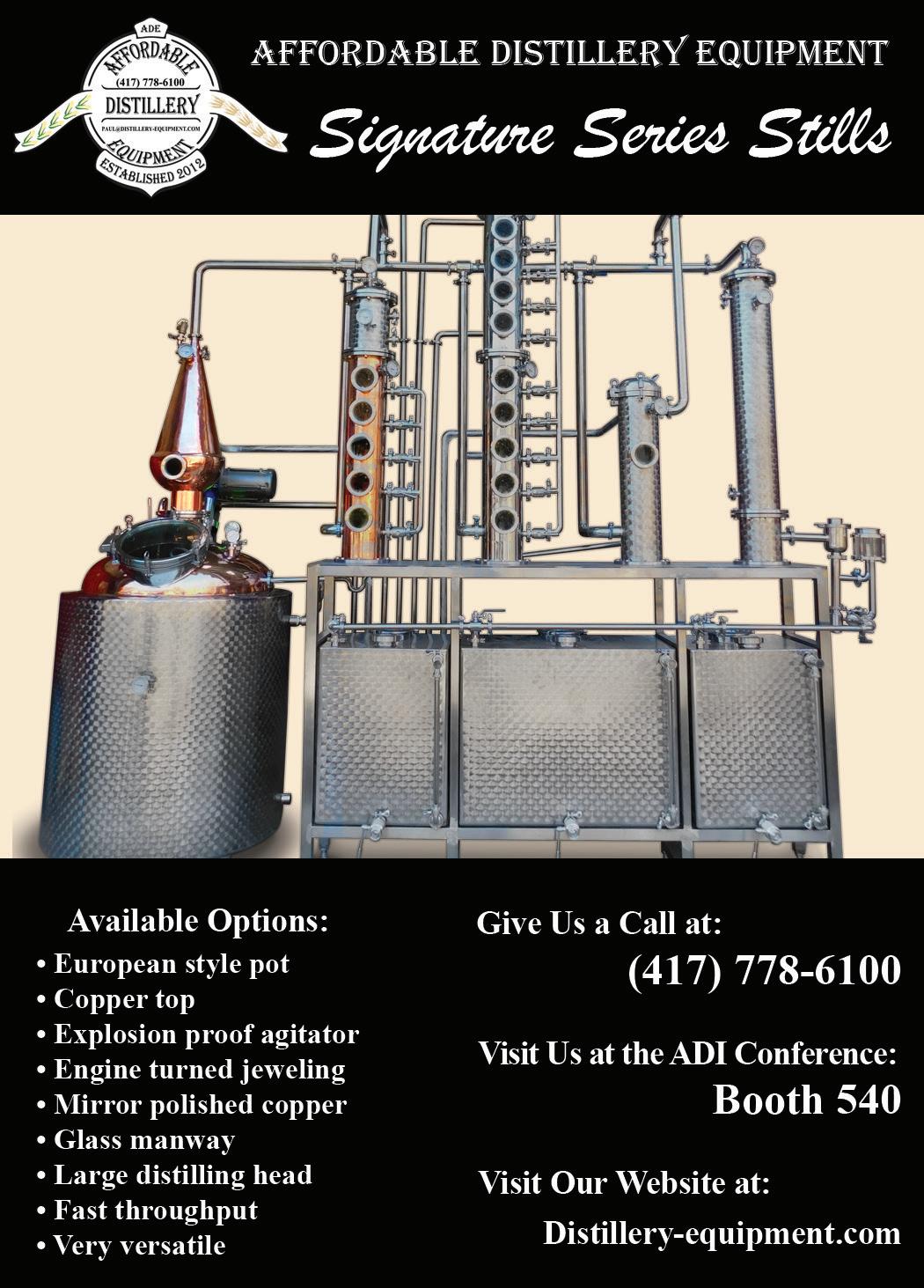
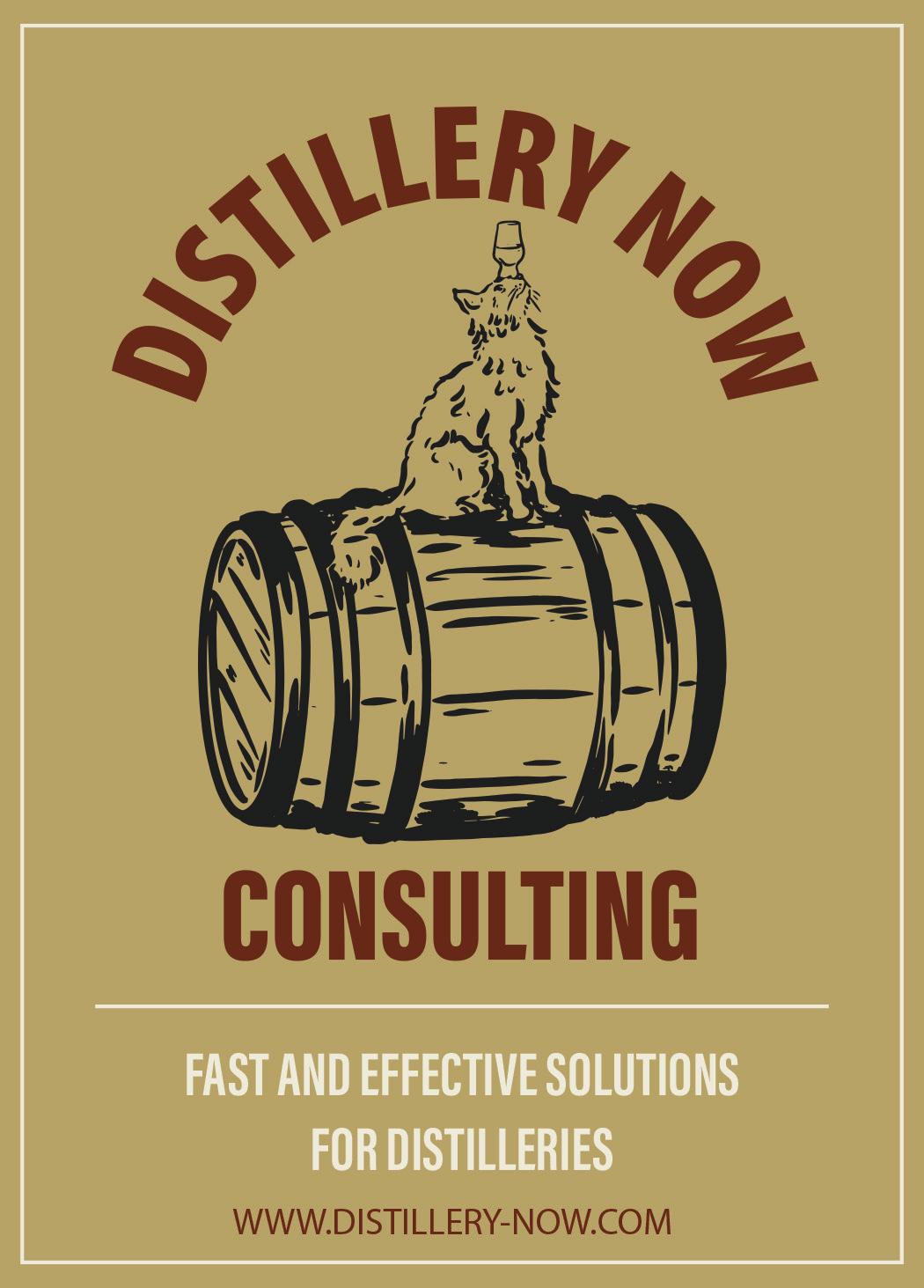
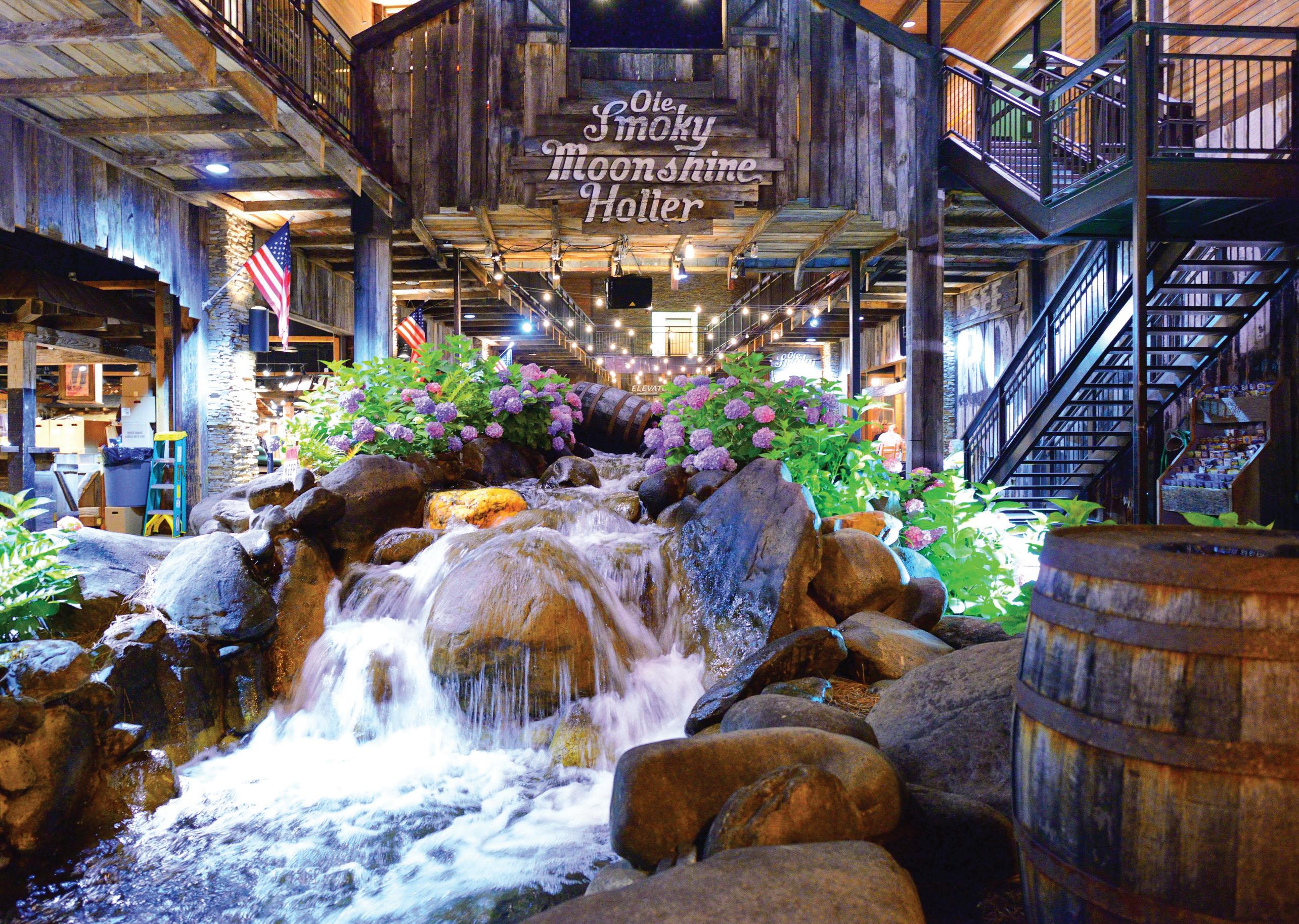
By: Becky Garrison
From cooling and cleaning equipment to diluting spirits, access to water remains a critical component for any distillery. For those distilleries looking to reduce their environmental impact while delivering the highest quality spirits, the following are some suggestions for how to improve the use of water in the distillery.
When possible, start with the most pristine water available. Hood River Distillers (Hood River, OR) has been using the same water source for the last 90 years, all coming from the Elliot and Coe Glaciers on the Northern Side of Mt. Hood. To ensure that
they can continue to access this water source, they partnered with Freshwater Trust. Caitlin Bartlemay, Master Distiller for Clear Creek Distillery and Hood River Distillers, Inc., /describes the benefits of this partnership. "With our growing donation through the Timberline Vodka brand, we can help them perform science and data-driven research on what our freshwater ways in the Pacific Northwest need to be repaired and restored.
When looking for a pure water source for a distillery, Bartlemay notes a few considerations that need to be taken into account. First, send in a water sample for testing, Keep an eye out for numbers for factors such as the mineral content, pH,
and chlorine. If the distillery uses municipal water, ask where they are sourcing the water and if they have multiple sources that they switch between. This will give an idea of how often they switch and what the chemical and organoleptic qualities of each source are.
As Bartlemay observes, "At the end of the day, nothing is better than good old-fashioned taste testing. Taste your water against quality bottled water brands and see what you taste." Next water down a spirit sample with distilled water and then water down another spirit sample with the water you want to use. Then compare how they both taste. Hold these samples at the new dilution for a few days and taste them again. Have lots of people taste these samples and collect quantitative answers on the flavor and aroma of the various spirits sampled. "What your water test says and what you learn from your taste tests will help determine what treatments you may need to explore if you need to explore any at all," Bartlemay opines.
For Jason Parker, Co-founder of Copperworks Distilling Co. (Seattle, WA), sustainability begins at the farms where he sources the grains used in his spirits. He supports those farmers who engage in good farming practices such as dry farming along with soil conservation efforts like growing cover crops and limited or no-till farming. As these environmental initiatives tend to produce a lower yield per acre than conversational farming, Parker ensures these farmers will receive the same price for their grains by paying them per acre planted rather than per bushel.
Mike Gifford of Blackfish Distillery (Auburn, WA) reported they were able to reduce their water usage by 95% last year by carefully refining their water usage against their distillation process. He described the cooling management for the condenser components of their column as a balance between incoming water temperature, outgoing water temperature, water flow rate in Gallons per minute, and proof output at each stage of distilling. According to Gifford, "Distillers can operate a still just fine with crude valves and produce acceptable
alcohol output, but they'll have no real management of the above variables until they add gauges, valves, and temperature monitoring of the output water."
In his estimation, adding precise valves with flow meters built in is inexpensive and is the starting point for reducing water usage. Also, monitoring the temperature of the output water enables them to use the maximum heat capacity of the water without over-cooling their distillation column. Through this process, they were able to go from 3 to 5 gallons per minute down to .5 gallons per minute very quickly. Plans include recycling their coolant water by combining off-the-shelf water sanitizers and taking advantage of the natural cooling that occurs at night.
According to Ayisha Mares, Assistant Distiller, VARA Winery & Distillery (Albuquerque, New Mexico), the most important thing they do to help reduce their water use is the chilled water loop system. "This recirculates water through heat exchangers and a holding tank, saving approximately 3,000 gallons of water per distillation cycle," she observes. The loop consists of heat exchangers, a big holding tank (water reservoir), and a pump to move the system.
Stephen Hopkins of Aimsir Distilling Company (Portland, OR) points to the challenges of obtaining a permit for a closed-loop cooling tower from the city of Portland. "I often wonder if both the city and we would have been better if we had gotten some help in the permit process to get a cooling tower. The city would also get a good ROI on helping to fund projects like that," he notes.
Rick Stillwagon of Stillwagon Spirits (Charleston, OR) stresses how municipal water systems are under attack and are becoming compromised. "All water should be treated as suspect and go through some purification process before drinking or cooking. It isn't difficult or too expensive to make sure the water you have access to is safe to use. It does require a bit of effort," he opines.
To prevent their spent wash from contaminating the local water supply, they adjust the pH of their spent wash before disposal. In the future, they
hope to partner with local farmers who can use this spent wash to irrigate their fields.
Stillwagon finds that ozone can be more effective than chlorination in disinfecting water against bacteria and viruses. When ozone decomposes in water, it creates free radicals that oxidize organic material in the membranes of bacteria, viruses, and parasites, which weaken, rupture and kill their cells. Also, Stillwagon observes how ozone can remove trace amounts of dissolved metals like iron, manganese, and copper by oxidizing them into solid particles that can be filtered out, as well as reducing or eliminating tastes and odors caused by chlorine.
After the ozone treatment, Stillwagon passes the water through sediment filters and then through a series of regularly maintained activated carbon filters. This makes sure the water is as pure and good-tasting as possible.
As collecting rain in Oregon is legal, Stillwagon seeks to capture some of Oregon's liquid bounty. As he noted, "Collection, storage, filtration and purification isn't difficult or expensive."
Also, Stillwagon finds recycling gray water isn't difficult as mechanical filters can remove solids and sediment. Carbon filtration can remove several problem compounds, and biological slow sand filters can remove most pathogens. In Stillwagon's estimation, these systems require a bit of effort and hardware to set up, but they are robust and hardy can can last for decades with proper maintenance. He finds that processing black water is a bit more complex but can be processed through mechanical and biological systems like "The Living Machine."
Other practices implemented byVARA Winery & Distillery to reduce their water use include installing high-efficiency cleaning systems called CIP (Clean-In-Place) that use less water by utilizing more efficient cleaning agents, as well as regularly maintaining and repairing any leaks that they have incurred to prevent unnecessary water loss.
In a similar vein, Kim Karrick, Owner and Distiller
of Scratch Distillery (Edmonds, WA), plumbed a pipe to help reclaim some water from the distillation process to use for their mash water. This action diminished the amount of water required, as well as reduced the amount of heat required.

In 2023, the EPA recognized eight distilleries for being the first to earn EPA’s ENERGY STAR certification for superior energy performance. Their energy-saving recommendations include conserving water with a focus on the steam and cooling systems. For more information about ENERGY STAR certification for distilleries, log on to their website at https://www.energystar.gov/industrial_plants/ improve/distilledspiritsfocus
In 2024, the global whiskey market’s worth has swelled to around $70 billion and is forecast to hit $125 billion by 2032. https://www. gminsights.com/industry-analysis/whiskey-market. This has made some look to whiskey as an attractive target for private investment.
Often, such investments are secured by the whiskey and related assets, as collateral. Here are tips on at least some of the considerations in creating the right recipe for such an endeavor.
The investor should ensure that it accurately secures its interest in the collateral by entering a written security agreement with the whiskey producer. A security interest attaches to the collateral and is enforceable against the debtor and third parties if: (1) value is given; (2) the debtor has rights to the collateral (i.e., the owner of the collateral or the right to transfer the collateral to the secured party); and (3) the debtor executes a security agreement. See UCC § 9.203(a).
Collateral Owner Identification: You will typically want the security agreement to correctly name the owner of the collateral. Among other things, confirm the name of the legal entity on the applicable secretary of state’s website; request and verify documentary proof that that party actually owns the collateral; include recitals of ownership in the security agreement; define the owner (once identified) in the agreement to include parents, subsidiaries, related companies, companies under common ownership, and the like; and take similar steps.
Non-Transfer: It can also be helpful for the security agreement to include language that prohibits the owner of the collateral from conveying, transferring, or assigning the collateral without your written consent, and affirmatively states that the owner will not do so.
Successor Liability: Consider including a successor liability clause that extends the security interest in the collateral to any subsequent owners in the event of an unauthorized conveyance, transfer, or assignment of the collateral. George W. Kuney, A Taxonomy and Evaluation of Successor Liability, 6 FLA. ST. U. BUS. L. REV. 9, 11 (2007) (“Successor liability is an exception to the general rule that, when one corporate or other juridical person sells assets to another entity, the assets are transferred free and clear of all but valid liens and security interests.”). Such a clause may also affirmatively require the named owner to take all affirmative steps reasonably necessary to cooperate with you (including, but not limited to, providing and signing any and all requested documentation) in recouping the collateral, should such an unauthorized transfer occur.
Describe the Collateral Correctly: The collateral needs to be described such that a third party can reasonably identify it. What that means is the subject of a lot of law and “magic words.”
As of July 1, 2001, all 50 states had adopted Article 9 of the Uniform Commercial Code, which governs secured transactions. While each state may differ in its interpretation and application of its implementation of Article 9, all will typically require that the description of the collateral be sufficient so that it reasonably identifies what is described. See UCC § 9.108(a). Particularly, a description of the collateral will reasonably identify the collateral and be sufficient if it identifies the collateral by specific
listing, category, a type of collateral identified by UCC Article 9 as enacted by the state in question (such as inventory, equipment, deposit accounts, etc.), quantity, formula, or the catchall—any other method, if the identity of the collateral is “objectively determinable.” See UCC § 9.108(b). A general description of the collateral as “all the debtor’s assets” or “all the debtor’s personal property” is not (alone) typically sufficient. See UCC § 9.108(c). It may also help to include in the description that the collateral is “investment property,” “inventory,” “accounts,” “contracts,” “proceeds,” if those descriptions are accurate, and always include certain “after-acquired property” language. See, e.g., UCC §§ 9.108(d), 9.204.
So, what does all that mean? It depends on the circumstances, and this is especially an area where pennywise legal advice in the drafting stage can have tremendous value down the line.
Perfect Your Security Interest: “Perfection” of a security interest is the process of publicly establishing a security interest in collateral for purposes of gaining priority among other interest holders. https://www.law.cornell.edu/wex/perfection. Among competing security interests, one that is perfected will prevail over those that are unperfected. See UCC § 9.301.
Perfection typically requires filing a UCC financing statement with the appliable secretary of state. A UCC financing statement is a document that includes basic information regarding your security interest, including the debtor’s name and mailing address, the secured party’s name and mailing address and that key description of the collateral. A primary purpose of all of this is to give the world notice of your security interest in the collateral you hope to lock down to protect your investment. You’ll want to file the UCC financing statement as soon as possible, and keep it current.
Beyond the security agreement, there are many other considerations to take into account. A couple common ones are interest and warehouseman relations.
Interest—Hogs Get Slaughtered: Of course, you may wish to charge interest on your investment. It is imperative that you be precise and conservative
about the interest rate and the terms of the interest calculation to avoid committing usury, which carries severe penalties.
Make sure that you know the maximum pre-judgment interest rate allowed by your state. Any percentage above that percentage, whether as stated or as calculated based on the agreement’s terms, can be usurious. And fixing an error there is often not as simple as correcting it after it has been called out—that is often too late.
When calculating interest, good practices include always rounding down, never up; excluding the start and end days of interest; and being careful about including and wording compounding provisions, as the law around those can vary widely.
Make Friends with the Warehouseman: In the craft whiskey space, it is likely that the barrels will be stored in a bonded warehouse, or else the distiller may be losing money by having to pay the taxes off the still, rather than after absorption and evaporation has occurred.
Bonded warehouses were first created by Federal law passed on Aug. 1, 1862; were taken advantage of to create Bottled-in-Bond spirits with the passage of the Bottled-in-Bond Act of 1897; and had their current bonding period structure set by the passage of the Forand Act of September 2, 1958.
In addition to the primary tax concerns addressed by all of these laws, the Bottled-in-Bond Act was passed to help ensure the authenticity and quality of the whiskey that the customers were drinking, in a time when many whiskeys and spirits contained unhealthy additives used by certain unscrupulous “Rectifiers.” Bonded warehouses are registered with, regulated and controlled by the federal government and their gaugers and provide a government-backed storage space for producers of craft whiskey to store their products.
Whether the storage facility of the collateral is a bonded warehouse or not, it is important for the investor to maintain a good working relationship and a steady stream of communication with the individuals who run the particular warehouse. Having this rapport with the warehouseman will be important to help monitor the collateral to ensure that (when the collateral is whiskey), it is kept properly, doesn’t “walk out the door” randomly,
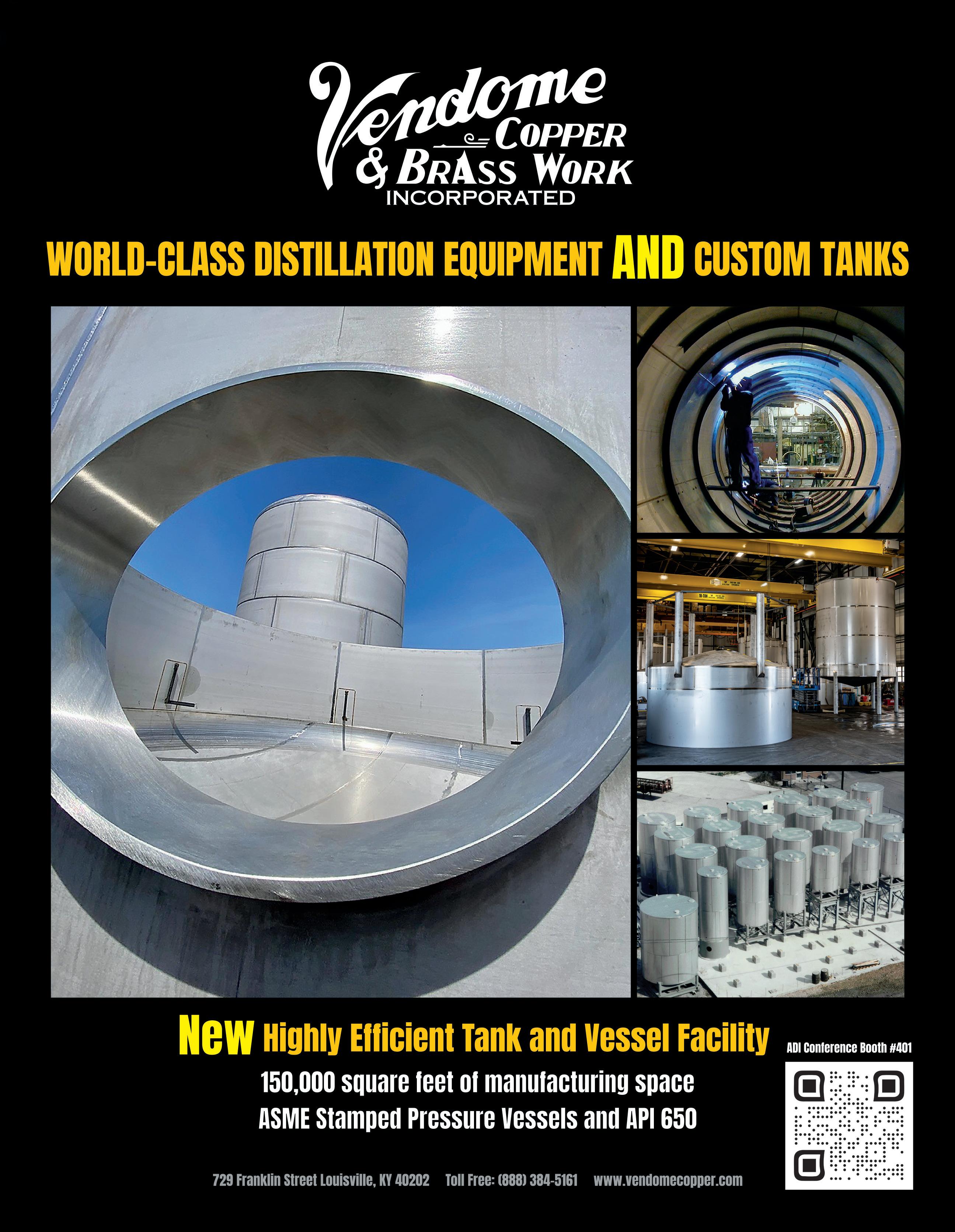
and can be reliably held if there is a default or dispute that may implicate the investor’s rights in the collateral.
In sum, if you are looking to invest in the craft whiskey industry, remember these tips to ensure that your investment is secured:
• Make sure the owner of the collateral is properly identified in the security agreement;
• Prohibit unauthorized transfers of the collateral and include a successor liability clause and/or a clause that requires your signature to authorize a transfer of the collateral in the security agreement;
• Be thoughtful, careful and precise in your description of the collateral, taking into account the legal requirements and legal meaning of the language you use (or don’t use);
• Perfect your security interest in the collateral by
filing a UCC financing statement with the secretary of state as soon as possible to have priority over other creditors;
• Don’t be greedy when it comes to providing for and calculating interest;
• Build and maintain good relationships with the warehousemen where the collateral whiskey is stored for aging so that you can make sure that the whiskey is properly maintained, remains in good condition and is there when you need to foreclose on it.
Ross Williams (rwilliams@bellnunnally.com) and Ty Johnson (tjohnson@bellnunnally.com) are partners, and Catherine Baldo (cbaldo@bellnunnally. com) is an associate, at Bell Nunnally & Martin LLP, a full-service business law firm based in Dallas, Texas. This article is for informational purposes only, and neither constitutes, nor should be taken as, legal advice or legal opinion.

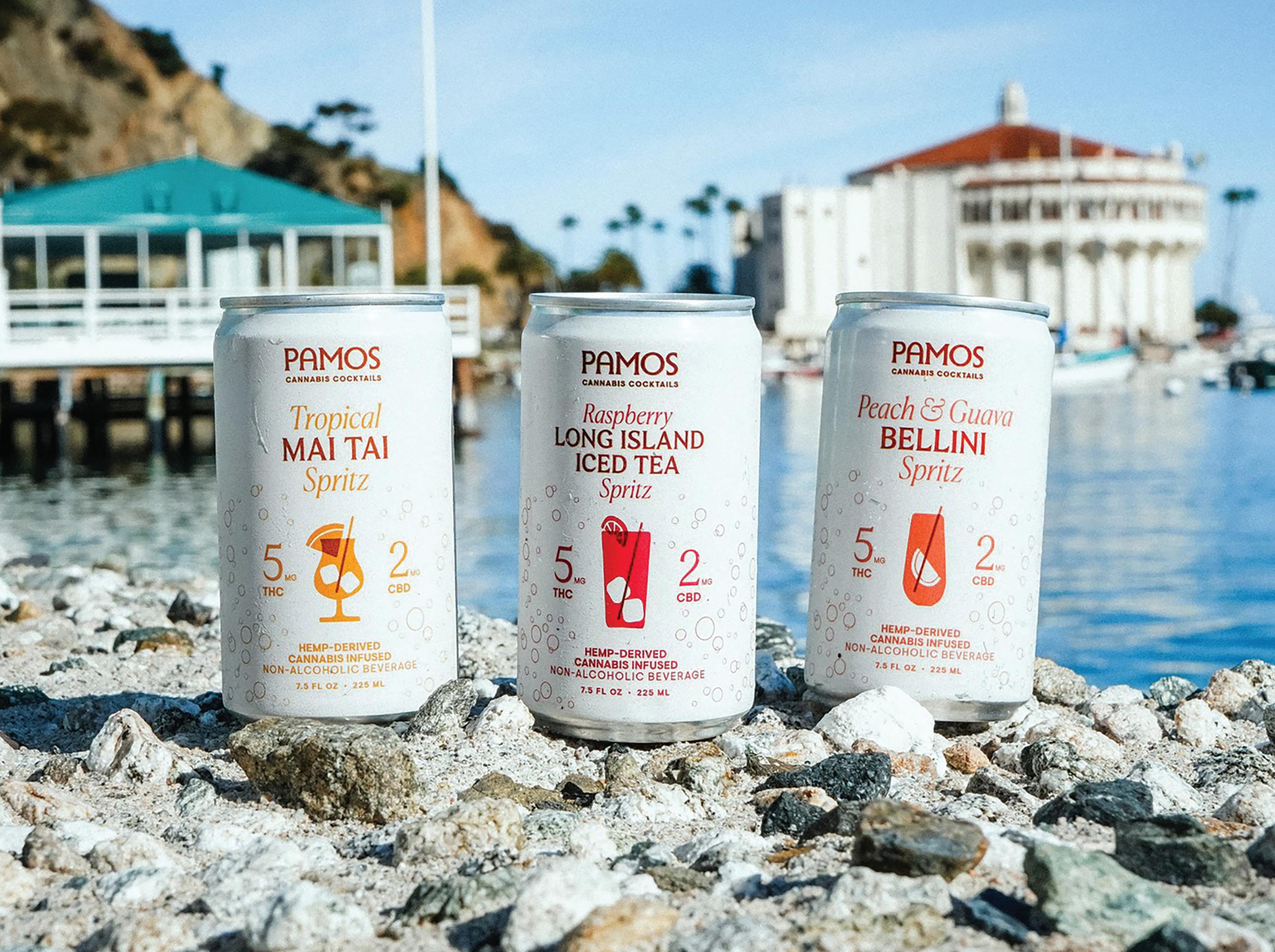
By: Gerald Dlubala
It was in early 2021 that David Mukpo, CEO of Pamos Cannabis Cocktails and Spirits, opened a cannabis dispensary. But that wasn’t his end game. His dispensary was successful, but he wanted to provide cannabis users an alternative to the limitations of either smoking cannabis or using edibles as the delivery method. Many consumers don't want to have to smoke to use cannabis, and others may not want to wait for the lengthy amount of time that gummies take to have any effect.
The successful dispensary became a pathway for Mukpo to create, get approval for and get widespread distribution for his Pamos cannabis and hemp-derived THC-infused spirits and cocktails. In October 2023, the hemp side of the business became a reality by launching in true traditional liquor retail and distribution fashion. Pamos appeals to the largest market possible by merging the familiar culture of conventional cocktails and spirits served in a bottle, can or glass with the
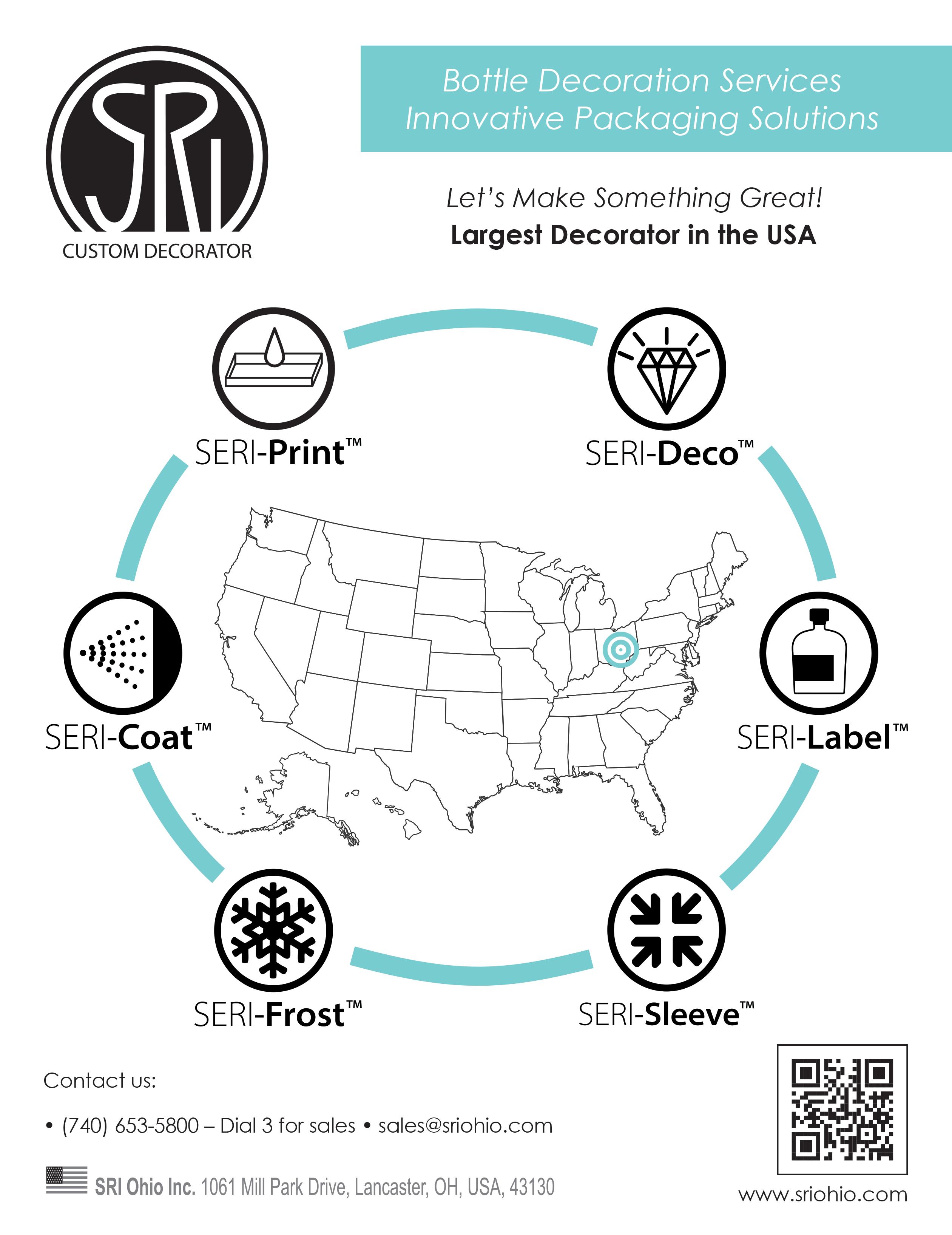
option for an alcohol alternative with none of the traditional debilitating side effects.
“At our core, we never set out to compete with cannabis,” said Mukpo. “Our entire project was, and is, designed as a new adult beverage category, positioned as an alternative to current alcohol consumption. But when we first launched, the only real pathway to do that was through the regulated marijuana industry, made legal by state-level programs. Dispensary products, however, lean towards high dose, low cost, flower and edibles forms. We had quite a lot of success there in California, Nevada and Arizona, but to an extent, it was fighting with one hand tied behind our back. At its core, beverages are not dispensary products. What changed that was the ability to use hemp. The 2018 Farm Bill made hemp federally legal as long as the concentration of THC is under three percent by dry weight. And to make a long story short, all of our products and products like ours have a concentration of physical substance of well under that. So, our products and plans went through the court system and state legislators and were ultimately deemed federally legal. That ruling drastically changed the way we were able to go to market. We now could use
traditional distribution methods, and as a result are distributed by some of the biggest beer distributors to the largest liquor retailers in the country.”
Mukpo tells Beverage Master Magazine that their hemp-derived THC distillate is emulsified and broken down into small, water-soluble particles. After that, the manufacturing process is similar to that of traditional nonalcoholic beverages.
“Our entire flavor profile from our spirit standpoint is designed to mimic alcohol,” said Mukpo. “One of the hardest things to do is create a nonalcoholic spirit that has the comparable taste and mindset that its alcohol-based counterpart would deliver. We use bitters for flavor and aroma and to create that cocktail reminiscence. Still, a lot of that mindset comes down to delivering that familiar flavor in a traditional form factor like a glass or can the consumer can hold. We've become Texas's second-largest-selling non-alcohol beverage in just a few months of sales. In our success, we're meeting an industry trend of consumers wanting a cocktail
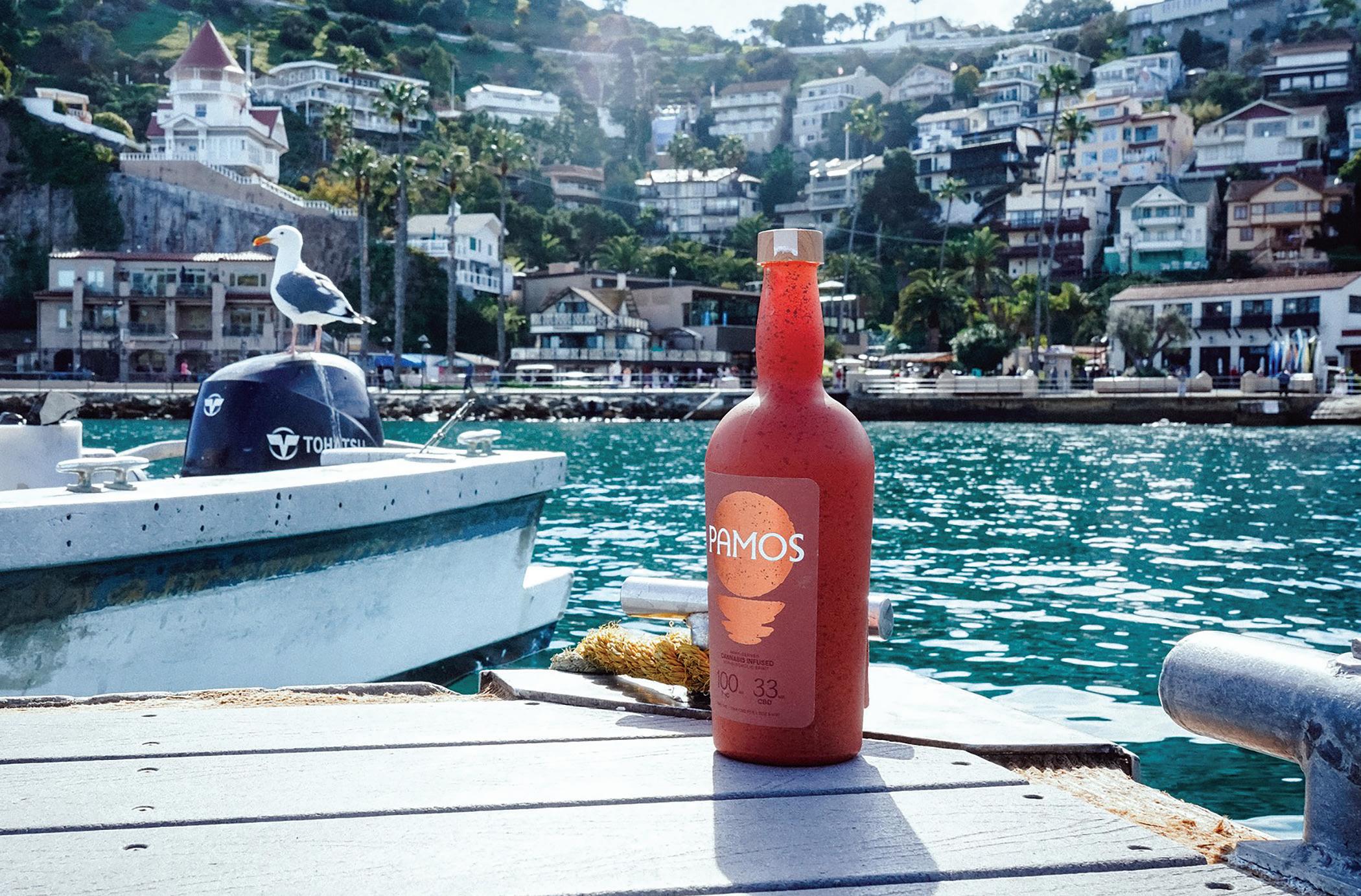
experience without the effects of the alcohol.”
Mukpo said that Pamos only sources ingredients and uses copackers with principles based on ethical and compliant origins.
"We are sold nationwide, so we have to know the workings of the farms and key partners we use,” he said. “We know how the ingredients are grown and understand the methods of production to maintain quality and safety. Any time Pamos puts THC into a beverage, we know where that plant came out of the ground. We track our chain of custody from seed to sale to ensure we use only compliant, ethically raised and produced hemp.”
“Pamos was built on getting consumers to use our cannabis-infused products through the use of a familiar form factor, namely a glass or can in their hand," said Mukpo. "The amount of liquids in cans sold in our country is staggering, so we thought that if we approached consumers with a familiar form factor, we'd have a stronger capability of gaining acceptance. Canned beverages are more digestible as a product and more acceptable in certain areas, situations or venues. Everyone knows what it’s like to socialize with a beverage in hand, so again, we’re shaping the industry into something that the consumer already understands and can feel.”
Consumers can expect to feel the effects of the balanced blend of CBD and THC-infused cocktails in as little as 10 to 15 minutes. Depending on the dosage ingested, the effects last about an hour or two. Mukpo said that his cocktails and spirits provide a lighter, milligram-adjustable social buzz than typical alcohol cocktails without the side effects of alcohol on the body, including hangovers.
While Pamos doesn't have the traditional tasting rooms like many craft beverage producers, they focus on providing consumers the opportunity to experience their products in the same environments where alcohol is typically consumed. Sold across the country, Pamos Cannabis Cocktails and Spirits are widely available in bars, restaurants, hotels, live sporting venues and more. While there are trace amounts of alcohol from the use of bitters (ABV of 0.1 percent), Pamos contains less alcohol than an average bottle of kombucha.
“Additionally, our beverages are vegan and made with natural, non-GMO, gluten-free ingredients, perfect for those with dietary restrictions,” said Mukpo. “Everything we do from a flavor standpoint is derived from natural flavors. We don’t currently use barrels or storage vessels to add flavor, but we’re not ruling that out in the future. Pamos is sold in ready-to-drink (RTD) canned cocktails and bottles as a spirit base. Our canned cocktails include a mai-tai, tropical mai-tai, peach and guava bellini, raspberry Long Island iced tea and more on the way. We’re looking at launching three new cocktail expressions in the next 60 days. Consumers can use our bottled spirits like they use alcoholic spirits now, creating their own cocktails at home. We’ve been pleasantly surprised with our sales mix because we expected the bottled spirits to be a smaller part of our portfolio, but it’s been almost a 50/50 split in bottled spirits and RTD sales across the country.”
Pamos boasts an extensive customer base with demographics across the board.
“In our early days, the strongest market was older consumers who wanted to cut down their alcohol consumption as it gets harder on their body," said Mukpo. "Since then, we've transitioned to a point where our strongest demographic is now 21 to 35-year-old women. To be honest, I think we were all taken by surprise at how quickly Pamos was picked up by consumers looking for a new option, but it leans on the fact that there were probably quite a few people across the country already consuming cannabis regularly. And even though the dispensaries have absolutely helped expand the audience and normalize cannabis use, the driving factor in our success is meeting consumer demand for an adult beverage option.”
Mukpo said there will always be those who don't like that products like these are available, but they’ve been very much in the minority. The early resistance was less than they anticipated, and the resistance that was there was more on the business-to-business side. “We had to be educators with our business-to-business clients simply because they were unsure if they could even sell it,” said Mukpo. “But once we educated and informed them of our legality and federally approved status, the retailers saw the data and
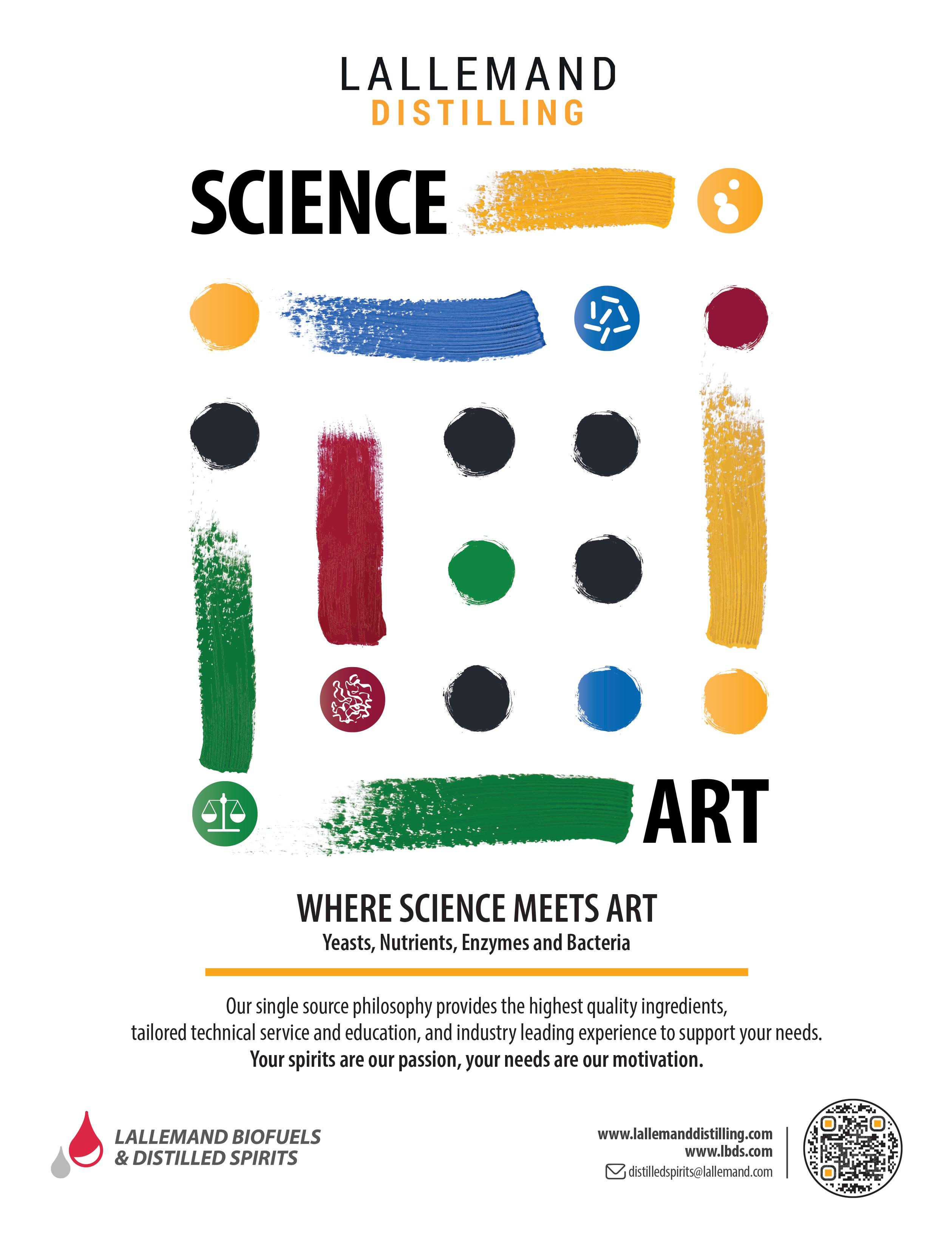
realized this was an exciting and new opportunity for them. On the consumer side, it’s about educating them on the fact that it is entirely legal and then presenting a new product to them in a familiar form factor: a can or glass to hold in their hand."
Pamos’ products are distributed in different-colored packaging corresponding to the dosage strength used in that particular drink or spirit. They are available in a range of dosages, starting at two milligrams of THC and CBD per serving, comparable to a glass of wine.

“We view ourselves as educators first and foremost,” said Mukpo. “Competition is not our primary concern. Properly educating the consumer is. It's a really easy solution, but we take it very seriously. We suggest everyone start at the minimum dosage and build to their tolerances and what they want from our product. Similar to the way you drink alcohol, we encourage you to have a drink and see how you feel. That experience determines if you can or want to have more.”
“Our volume will continue to grow because it's already doing so,” said Mukpo. “We’re filling orders for truckloads rather than the initial orders of pallets or cases. It’s all about growing distribution capacity and increasing availability. We have a
strong presence developing in the southeast and Texas, and we want to continue to expand with properly scaled distribution partners. Our goals are less about specific target numbers and more about ensuring the distribution network we’re building is best in class. We're proud of our partners and those we're developing, and that's something we look forward to continuing to do. For now, our time and resources are best spent educating our consumers and distribution partners. As we continue to scale upwards, we’re open to expanding our lines and offerings, and if the economics make it worthwhile, maybe one day look to bring canning and other aspects in-house. We may even look into storefronts as a way to provide consumers alternative ways of consumption."
Mukpo said that opening a dispensary made him aware of how important it is to dedicate resources to educate everyone, from in-house staff to end users. Gaining that education on what the product is, how to use it properly and what to expect builds the ability to educate curious, uninformed or misinformed consumers.
“If you want to get into this business or any craft beverage business, you have to have an unwavering passion, of course, but you have to realize that getting liquid into a can is the easy part,” said Mukpo. “You better be ready to continue your education and be comfortable enough to step into an educator role as needed. As entrepreneurs, we are generally comfortable jumping into the unknown. But you have to go into this industry with an open mind and be ready for a new challenge every day. That may be intimidating, but it’s also very rewarding. I mean, how many times in life do you get the opportunity to build an industry from the ground up? It’s exciting to be a part of.”
For more information on Pamos products, their cannabis cocktail club or to order spirits and cocktails, visit: https://www.pamos.com
Note from the Publisher: Check individual state laws regarding the purchase and distribution of this product as it may be prohibited due to its ingredients. Bricker Publishing does not endorse or promote the use or purchase of this product. This article was published solely for informational purposes.
This fan-favorite from 2 Towns Ciderhouse and Westward Whiskey is back for a limited time!
Corvallis, Ore. - July 19, 2024 - Two renowned pioneers in the PNW craft beverage industry, Westward Whiskey and 2 Towns Ciderhouse, have joined forces once again to bring back a beloved favorite: the Westward Whiskey Bad Apple. This creation takes the award-winning Bad Apple Imperial Cider and ages it in Westward Whiskey barrels, resulting in a bolder version of one of 2 Towns Ciderhouse’s most celebrated flagships.
Key Details:
• ABV: Robust 12%
• Aging: Whiskey barrel-aged
• Bottle Format: 12x375ml bottles
• Limited Draft Availability
Available in Oregon, Washington, California, Arizona, Nevada and Minnesota
Launch Party at the 2 Towns Taproom
Saturday, July 20 from 5:00pm to 8:00pm, To celebrate this new release, 2 Towns Ciderhouse is co-hosting a free specialty tasting with Westward Whiskey at the 2 Towns Taproom. Representatives from Westward Whiskey and 2 Towns will be on hand to lead customers through a lineup of specialty whiskeys and give an exclusive taste to see just how beautifully an aged whiskey barrel can shape a cider with the Westward Whiskey Bad Apple. This event takes place at the 2 Towns Taproom located at 33930 Southeast Eastgate Circle Corvallis, OR Visit Eventbrite to reserve a free spot.
2 Towns Ciderhouse was founded on the belief that the long history of cidermaking demands respect and deserves to be done right. Starting with the highest quality, whole ingredients from local farms, we take no shortcuts in crafting our ciders. Over the years our company has retained these core values to branch out into different segments within the alcohol beverage space to become a premium total beverage company. Our goal is to create the best craft beverages on the market and
continue to develop and evolve the beverage space in innovative new ways.
From humble beginnings in 2010 in an old 900 sq. ft. 2 car garage we have grown into one of the largest craft beverage companies in the northwest now employing over 100 individuals, distributing to 15+ states and running 3 different production facilities totaling almost 100,000 sq. feet. As a family-owned company, we are committed to the growth of our team and the enrichment of our communities. We take pride in producing true Northwest craft beverages. Visit www.2townsciderhouse.com.
The pinnacle of American whiskey. Westward began in 2004 with a vision: to make a distinctive American whiskey inspired by the culture, climate, and natural ingredients of the American Northwest. From humble beginnings to its impressive footprint today, creating a bold, robust, and delicious whiskey has remained the team’s true passion. For two decades, the company has proudly been a leading voice for American whiskey. Westward’s flagship family of whiskeys –Westward Whiskey Original, Westward Whiskey Pinot Noir Cask, and Westward Whiskey Stout Cask, and Westward Whiskey Cask Strength – have earned high praise around the world, including Double Gold and Gold Medals at the San Francisco World Spirits Competition for all four whiskeys, and the distinction of #5 Whiskey in the World by Whisky Advocate (for Cask Strength in 2022). Westward Whiskey is available nationwide and in select international markets. Visit WestwardWhiskey.com for more info, follow along on Facebook and Instagram, and find a bottle near you today.
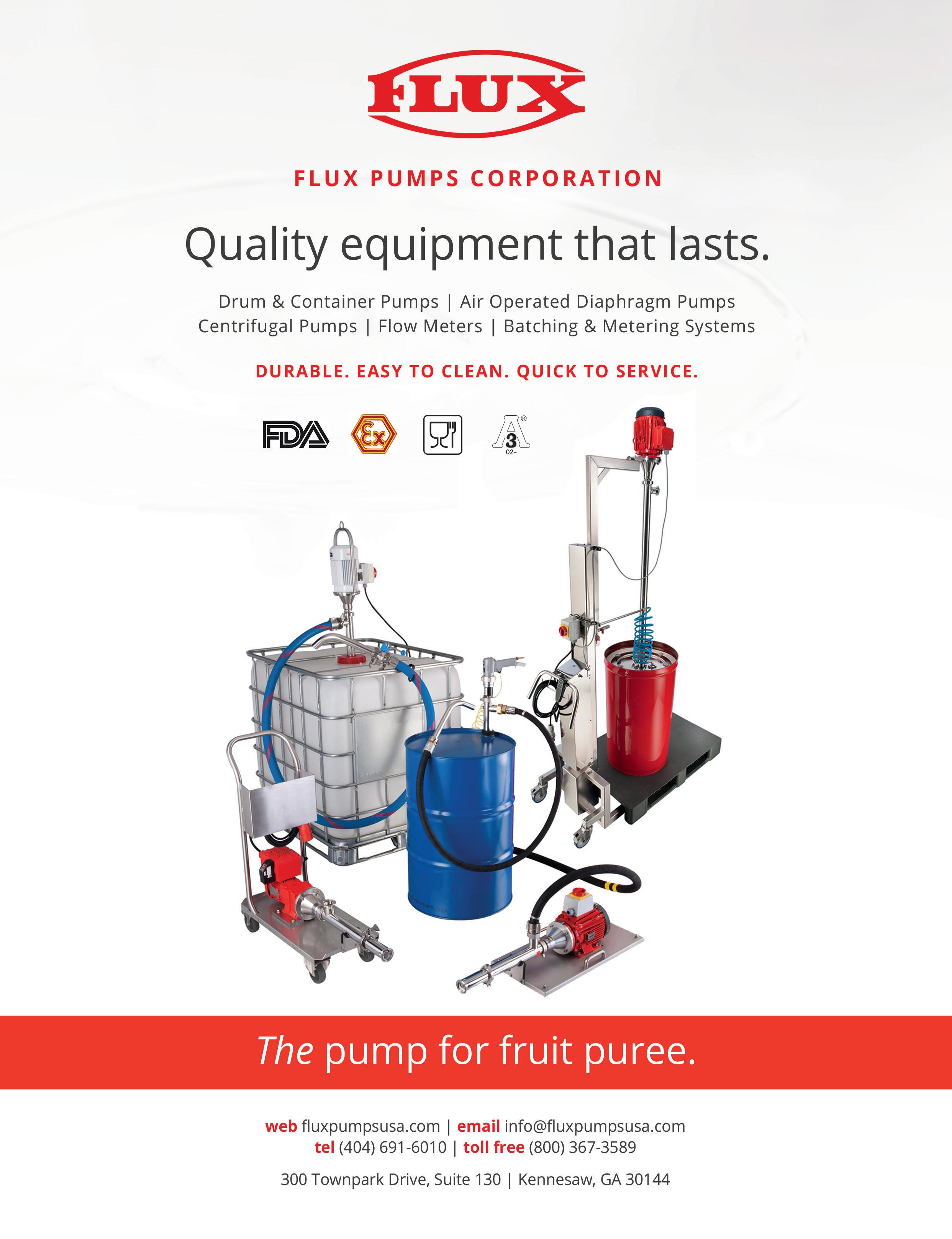
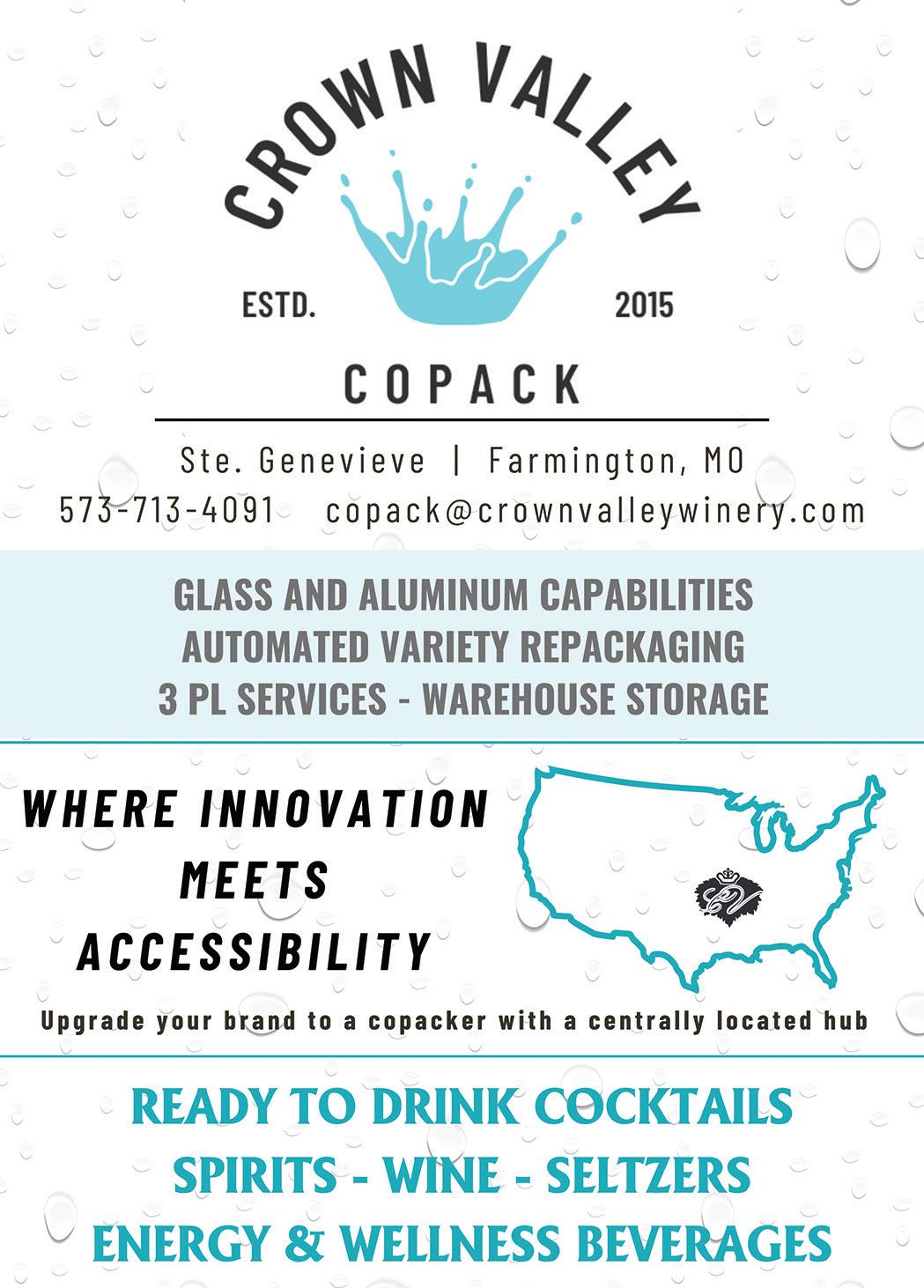

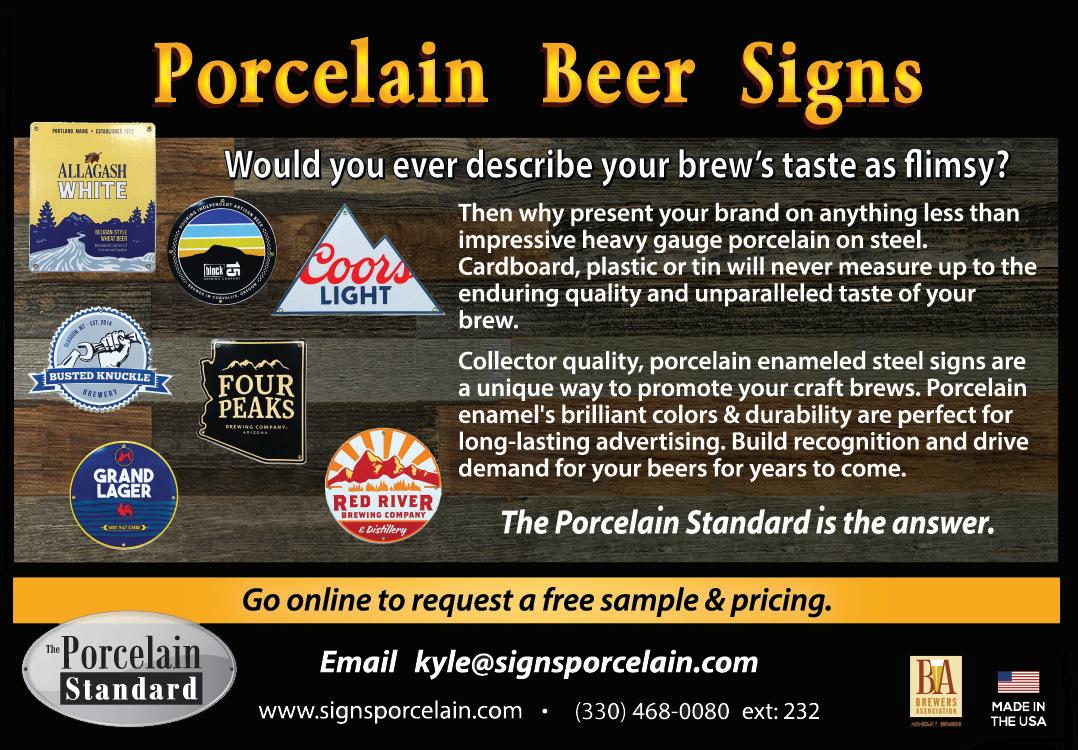
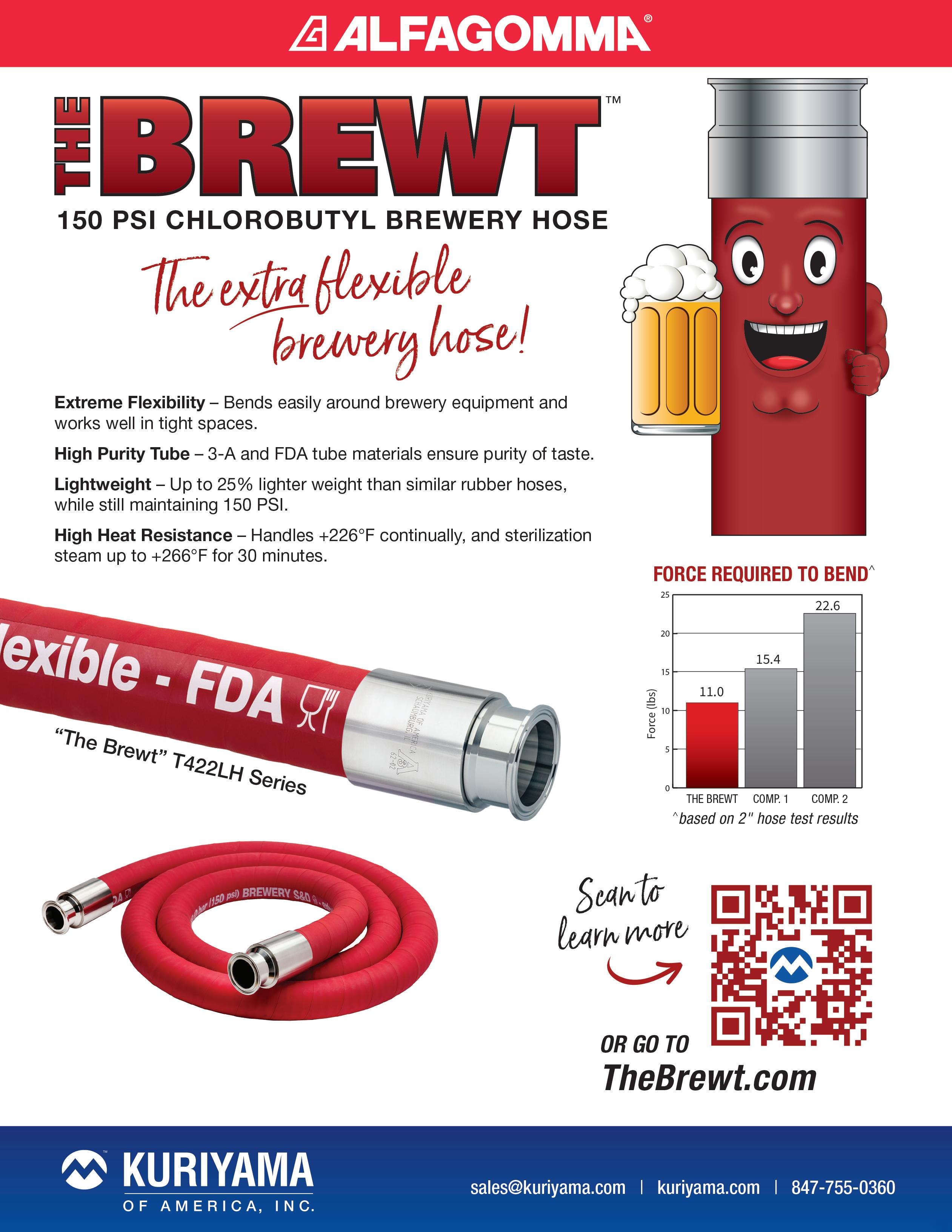
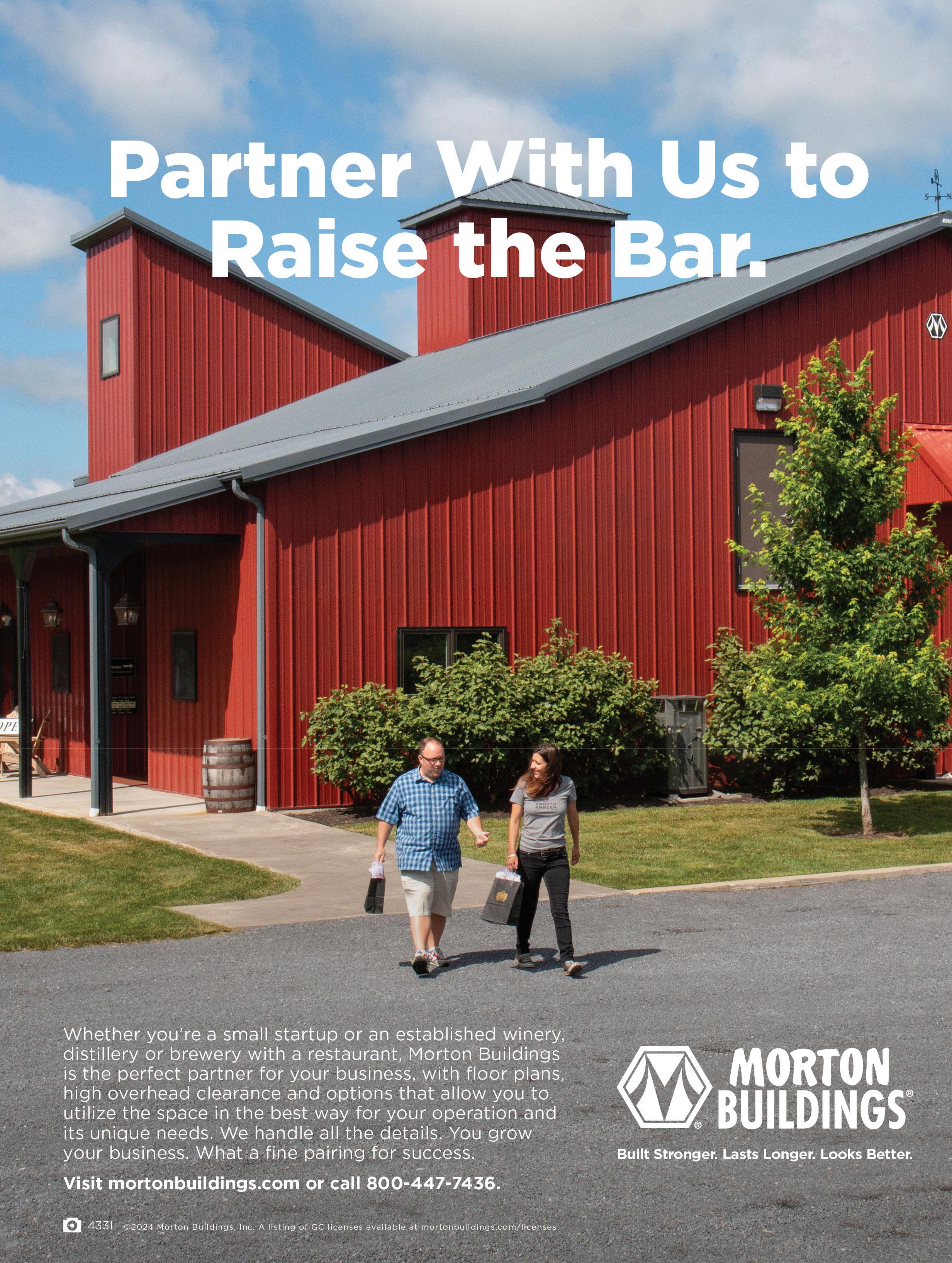



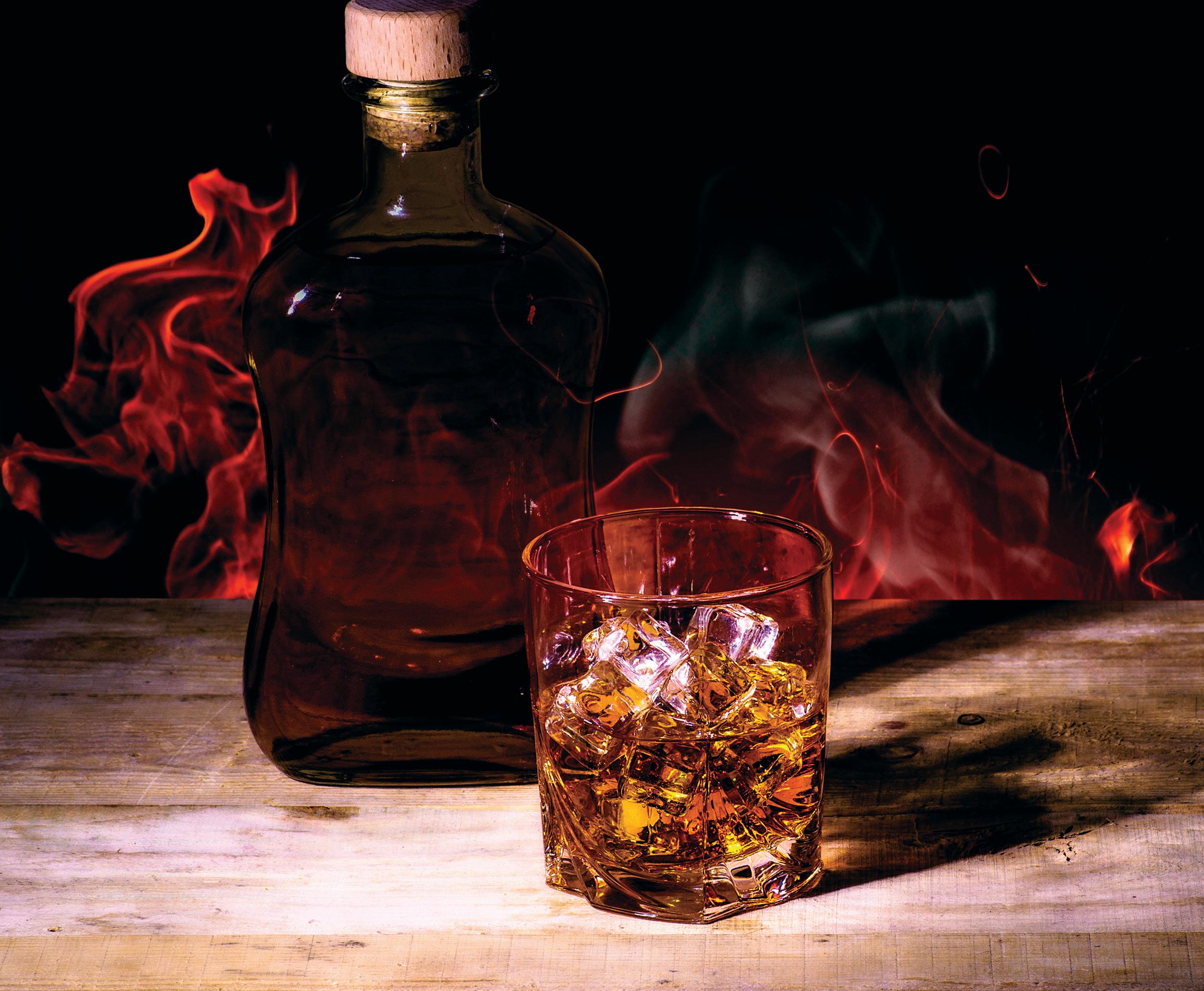



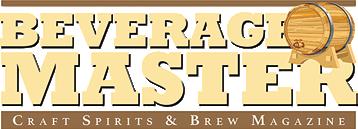
ADI (Featured Exhibitors) • August 27-28, 2024 • Baltimore, MD Beverage Master Magazine • www.brickerpublishing.com



ADI (Featured Exhibitors) • August 27-28, 2024 • Baltimore, MD
Beverage Master Magazine • www.brickerpublishing.com

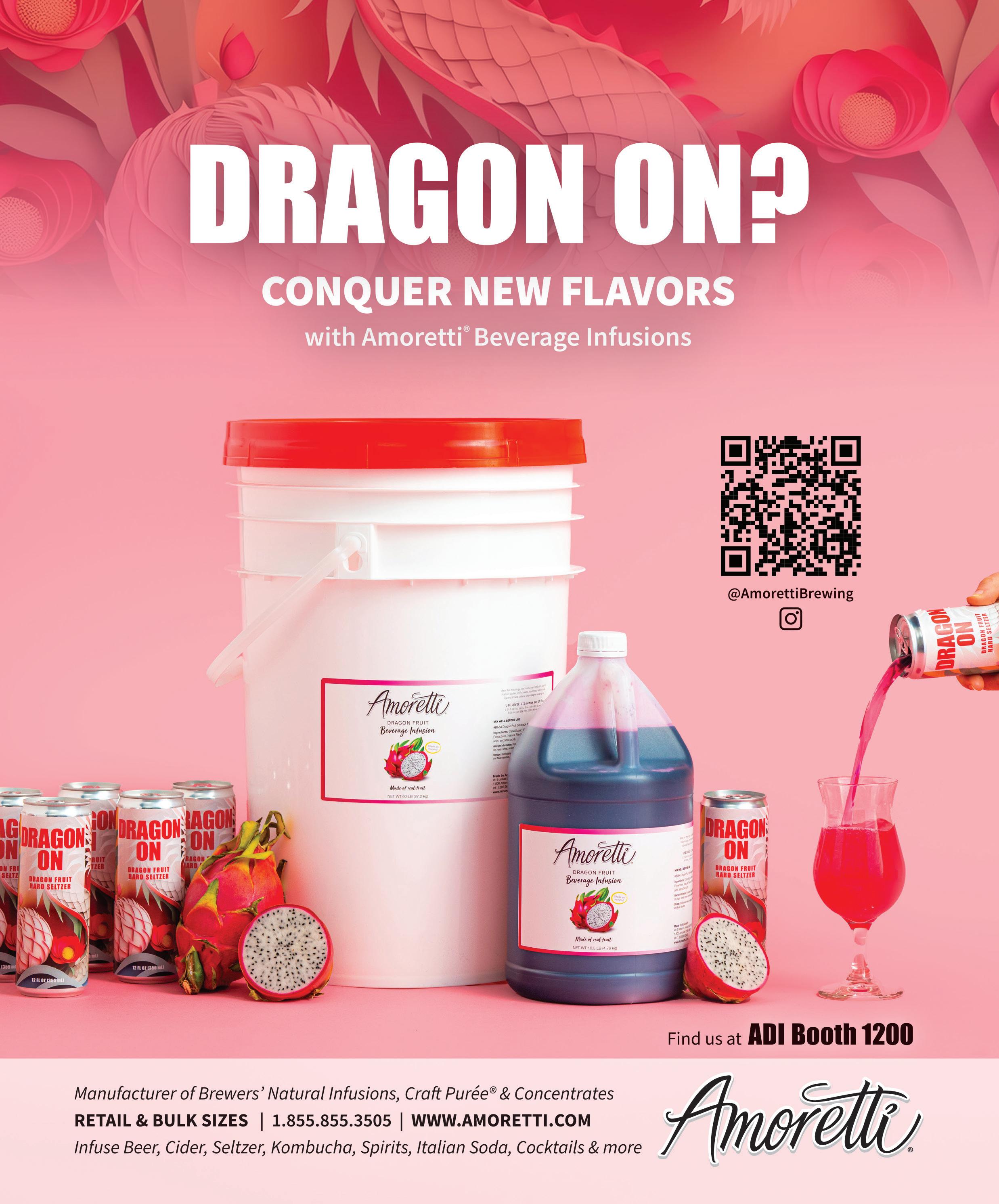

ADI (Featured Exhibitors) • August 27-28, 2024 • Baltimore, MD Beverage Master Magazine • www.brickerpublishing.com

